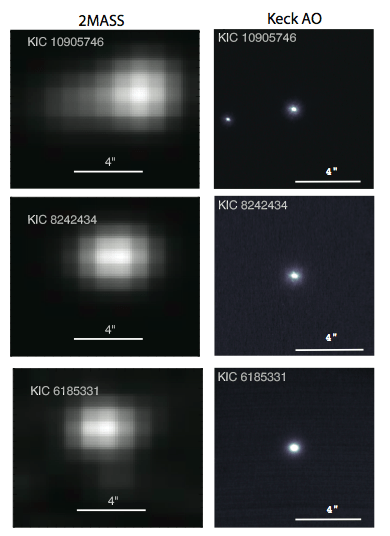The Solar System is a spinny place. Everything’s turning turning. But if you look closely, there are some pretty strange spins going on. Today we talk about how everything started turning, and the factors that still “impact” them today.
Continue reading “Astronomy Cast Ep. 409: Spin in the Solar System”
ALMA Captures Never-Before-Seen Details of Protoplanetary Disk

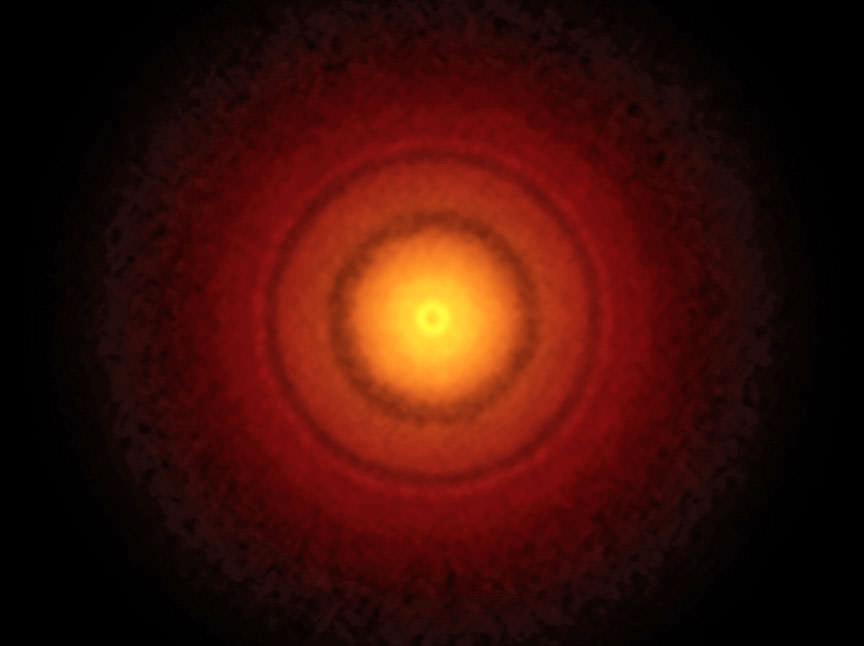
TW Hydrae is a special star. Located 175 light years from Earth in the constellation Hydra the Water Snake, it sits at the center of a dense disk of gas and dust that astronomers think resembles our solar system when it was just 10 million years old. The disk is incredibly clear in images made using the Atacama Large Millimeter/submillimeter Array (ALMA) in Chile, which employs 66 radio telescopes sensitive to light just beyond that of infrared. Spread across more than 9 miles (15 kilometers), the ALMA array acts as a gigantic single telescope that can make images 10 times sharper than even the Hubble Space Telescope.
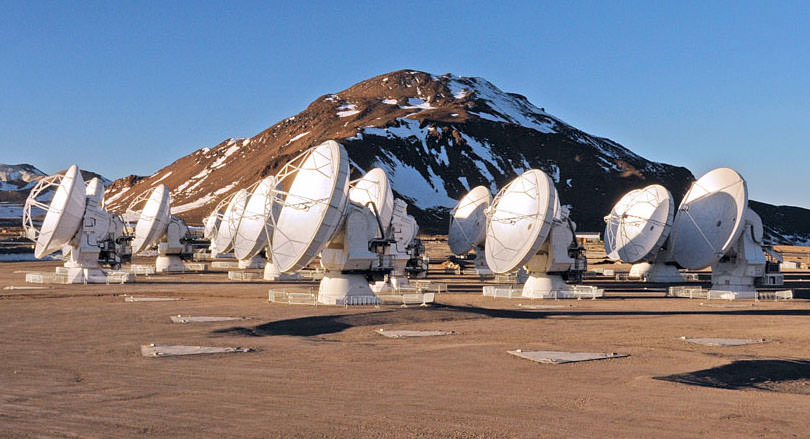
Astronomers everywhere point their telescopes at TW Hydrae because it’s the closest infant star in the sky. With an age of between 5 and 10 million years, it’s not even running on hydrogen fusion yet, the process by which stars convert hydrogen into helium to produce energy. TW Hydrae shines from the energy released as it contracts through gravity. Fusion and official stardom won’t begin until it’s dense enough and hot enough for fusion to fire up in its belly.
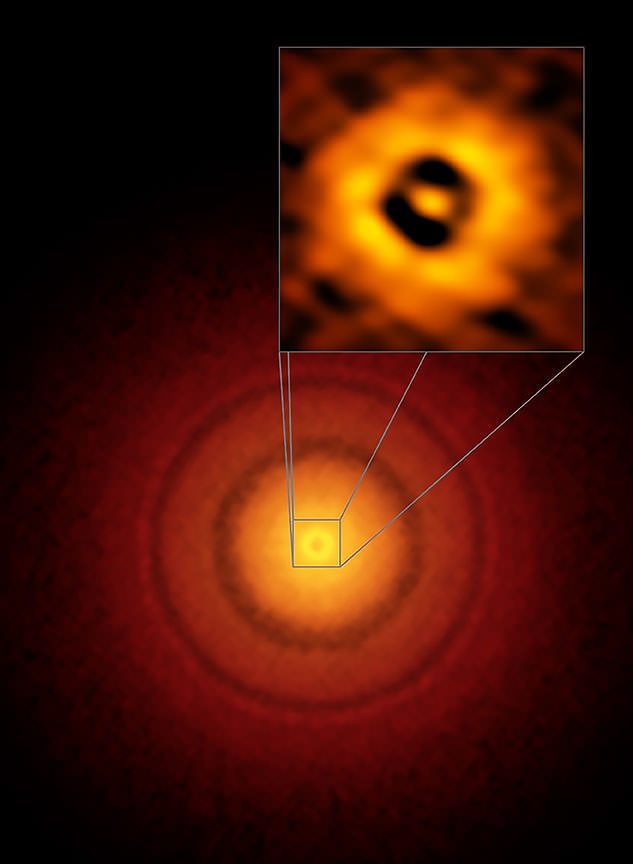
We see most protoplanetary disks at various angles, but TW’s has a face-on orientation as seen from Earth, giving astronomers a rare, undistorted view of the complete disk around the star. The new images show amazing detail, revealing a series of concentric bright rings of dust separated by dark gaps. There’s even indications that a planet with an Earth-like orbit has begun clearing an orbit.
“Previous studies with optical and radio telescopes confirm that TW Hydrae hosts a prominent disk with features that strongly suggest planets are beginning to coalesce,” said Sean Andrews with the Harvard-Smithsonian Center for Astrophysics in Cambridge, Massachusetts, USA and lead author on a paper published today in the Astrophysical Journal Letters.
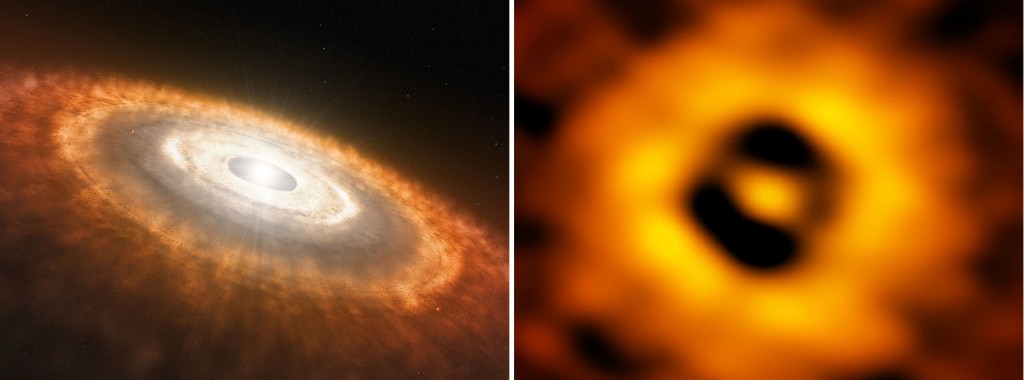
Pronounced gaps that show up in the photos above are located at 1.9 and 3.7 billion miles (3-6 billion kilometers) from the central star, similar to the average distances from the sun to Uranus and Pluto in the solar system. They too are likely to be the results of particles that came together to form planets, which then swept their orbits clear of dust and gas to sculpt the remaining material into well-defined bands. ALMA picks up the faint emission of submillimeter light emitted by dust grains in the disk, revealing details as small as 93 million miles (150 million kilometers) or the distance of Earth from the sun
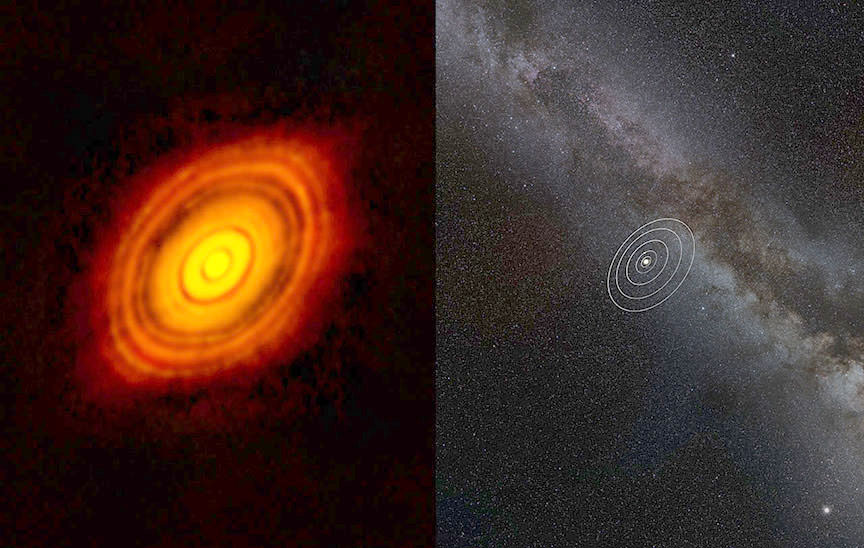
“This is the highest spatial resolution image ever of a protoplanetary disk from ALMA, and that won’t be easily beaten in the future!” said Andrews.
Earlier ALMA observations of another system, HL Tauri, show that even younger protoplanetary disks — a mere 1 million years old — look remarkably similar. By studying the older TW Hydrae disk, astronomers hope to better understand the evolution of our own planet and the prospects for similar systems throughout the Milky Way.
Your Favorite Planet May Soon Turn Up In The Mail
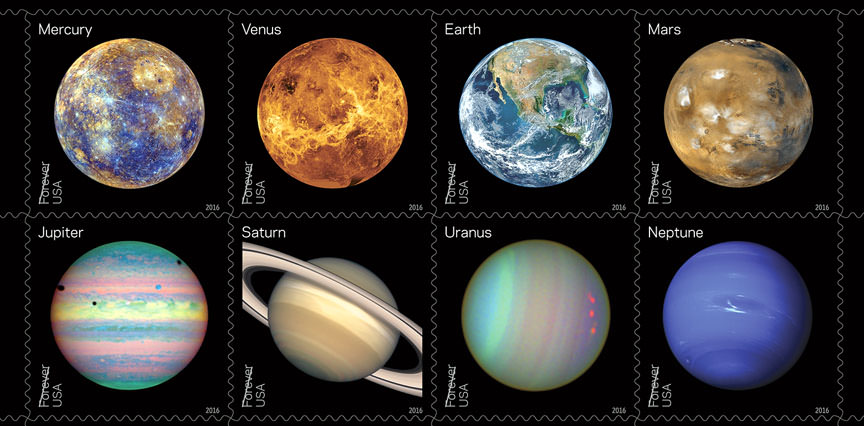

Credits: USPS/Antonio Alcalá © 2016 USPS
Whenever I go to the post office to pick up stamps I always ask for the most colorful ones. No dead president heads for me. Mailing letters is a rare thing nowadays — might as well choose something colorful and interesting. How sweet then that we’ll soon be able to pick and stick our favorite planets (and dwarf planet!) on the mail and send them flying off to far places.
The U.S. Postal Service sneak-previewed a new series of stamps earlier this year highlighting NASA’s Planetary Science program, including a do-over of a famous Pluto stamp commemorating the New Horizons’ historic 2015 flyby. Also in the works are eight new colorful Forever stamps featuring NASA images of the planets, a Global Forever stamp dedicated to Earth’s moon and a tribute to 50 years of Star Trek.
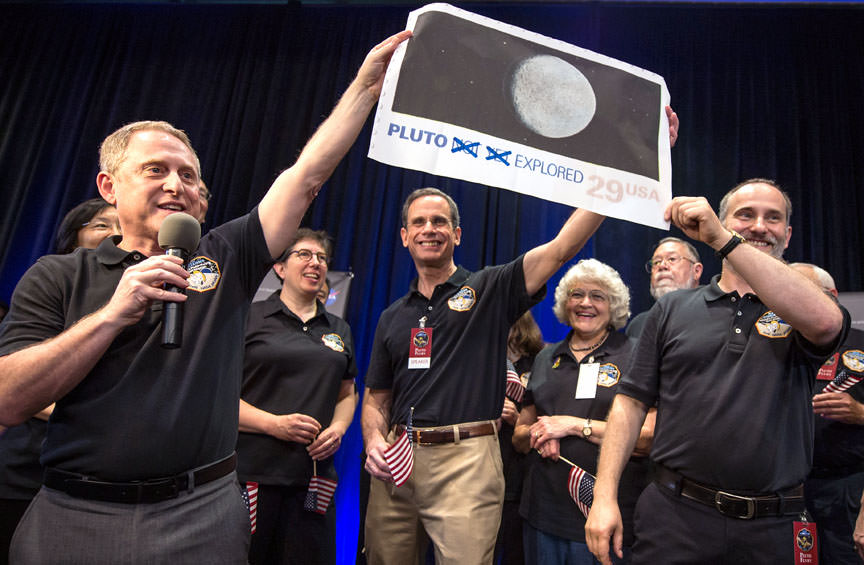
The New Horizons team, which placed a 29-cent 1991 “Pluto: Not Yet Explored” stamp on board the New Horizons spacecraft, is thrilled at the updated stamp recognizing the mission.
“The New Horizons project is proud to have such an important honor from the U.S. Postal Service,” said Alan Stern, New Horizons principal investigator from the Southwest Research Institute. “Since the early 1990s the old, ‘Pluto Not Explored’ stamp served as a rallying cry for many who wanted to mount this historic mission of space exploration. Now that NASA’s New Horizons has accomplished that goal, it’s a wonderful feeling to see these new stamps join others commemorating first explorations of the planets.”
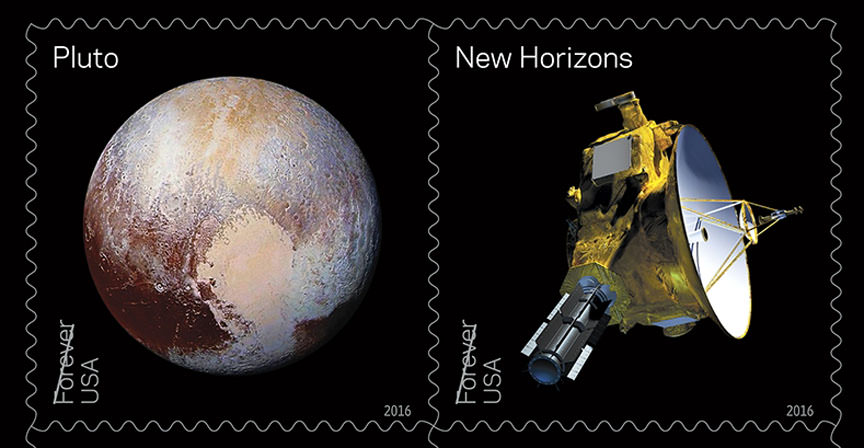
Credits: USPS/Antonio Alcalá © 2016 USPS
In the upcoming planet series, we’re treated to a color-enhanced Mercury taken by MESSENGER highlighting the planet’s varied terrains. Venus appears in all its naked volcanic glory courtesy of the Magellan probe which mapped the planet using cloud-penetrating radar. Like Mercury, it’s also color-enhanced since it’s impossible to see the surface in visual light even from orbit. Earth and Mars were photographed in natural light with orbiting satellites in tow.
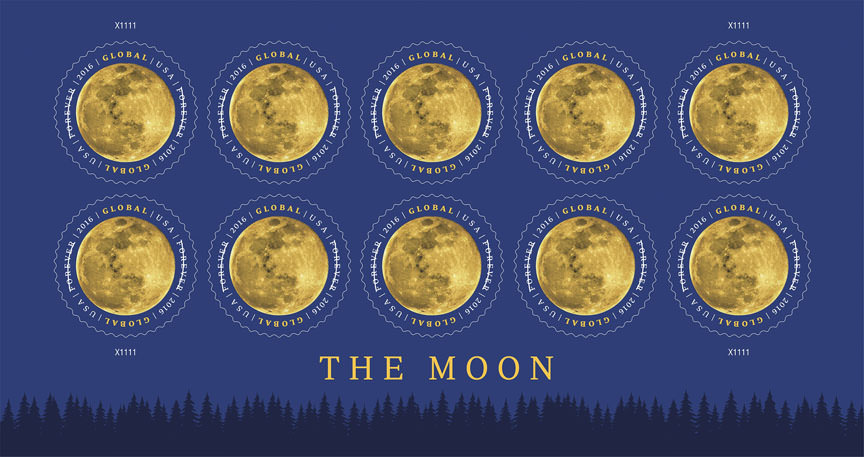
Credits: USPS/Greg Breeding under the art direction of William Gicker © 2016 USPS
The Hubble Space Telescope photographed Jupiter in infrared light in 2004, capturing a rare triple transit of the moons Ganymede, Io and Callisto. Saturn comes to us from the Cassini probe, still in good health and routinely sending gorgeous images every month of the ringed planet and its moons. Pity the rings had to be trimmed, but it had to be done to keep all the globes close to the same relative size. Hubble took Uranus’ picture in infrared light, while the Neptune close-up was sent by the Voyager 2 spacecraft in 1989.

2016 also marks the 50th anniversary of the television premier of Star Trek, which the post office will commemorate with the new Star Trek Forever stamps. They feature four digital illustrations inspired by the television program: the Starship Enterprise inside the outline of a Starfleet insignia, the silhouette of a crewman in a transporter, the silhouette of the Enterprise from above and the Enterprise inside the outline of the Vulcan salute.
The Global Moon stamp was issued on Feb. 22. You can pre-order the Pluto and planet stamps from USPS.com 30 days before their dedication between May 28 and June 4 at the World Stamp Show in New York. Expect the Star Trek series sometime this summer.
Why Do Planets Have Rings?
Planet come in a wide variety of sizes, compositions, and colors – and they can sometimes have rings. Where do these rings come from?
Continue reading “Why Do Planets Have Rings?”
Space Station Back At Dusk / See Orion’s Curlicue and Five Dawn Planets
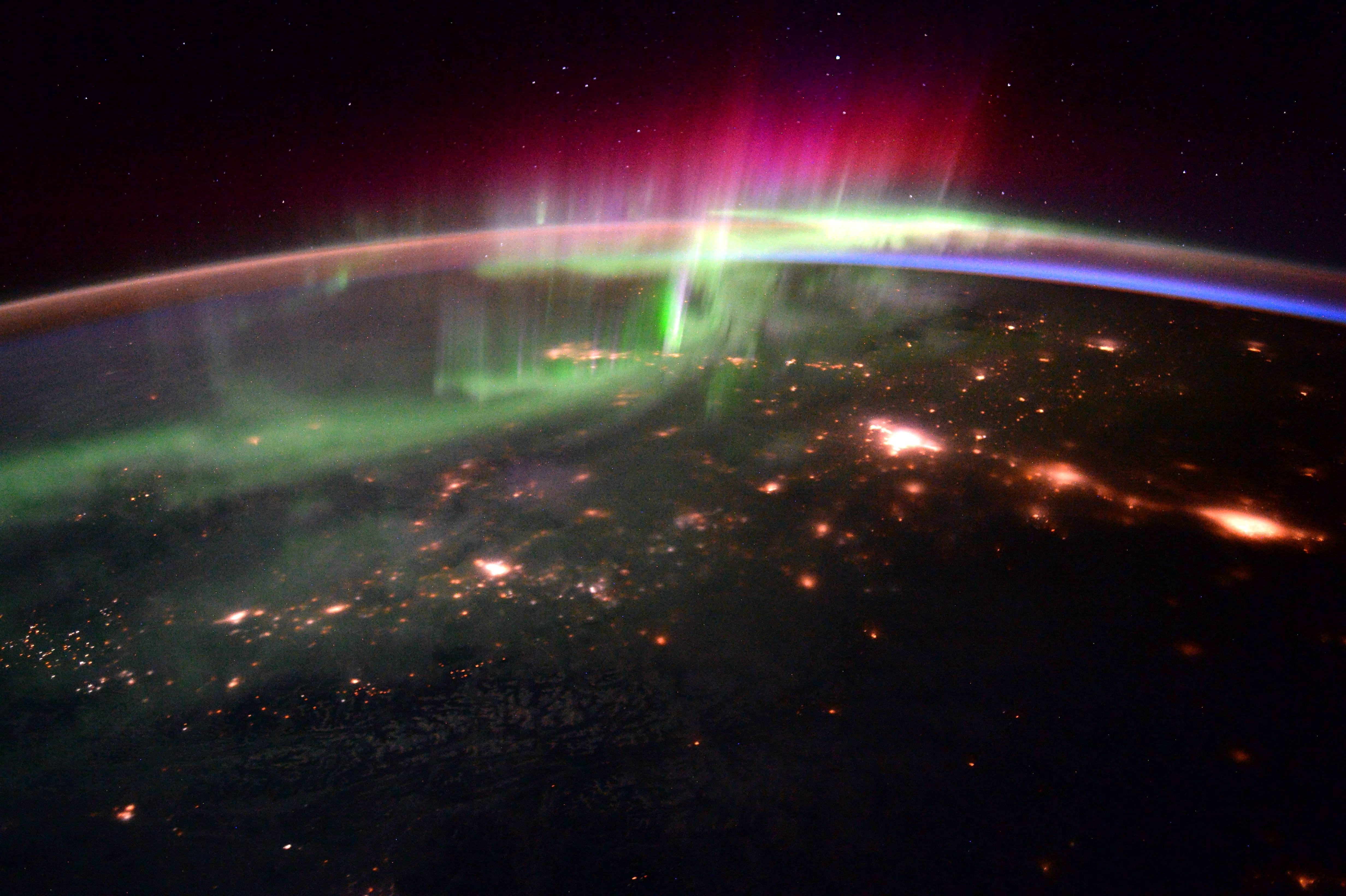
I hadn’t been paying attention, so I was pleasantly surprised two nights ago to see the International Space Station (ISS) made a bright pass in the southwestern sky. A quick check revealed that another round of evening passes had begun for locations across the central and northern U.S., Canada and Europe. I like the evening ones because they’re so much convenient to view than those that occur at dawn. You can find out when the space station passes over your house at NASA’s Spot the Station site or Heavens Above.
The six-member Expedition 46 crew are wrapping up their work week on different types of research including botany, bone loss and pilot testing. Plants are being grown on the International Space Station so future crews can learn to become self-sustainable as they go farther out in space. While they work their jobs speeding at more than 17,000 mph overhead, we carry on here on the surface of the blue planet.
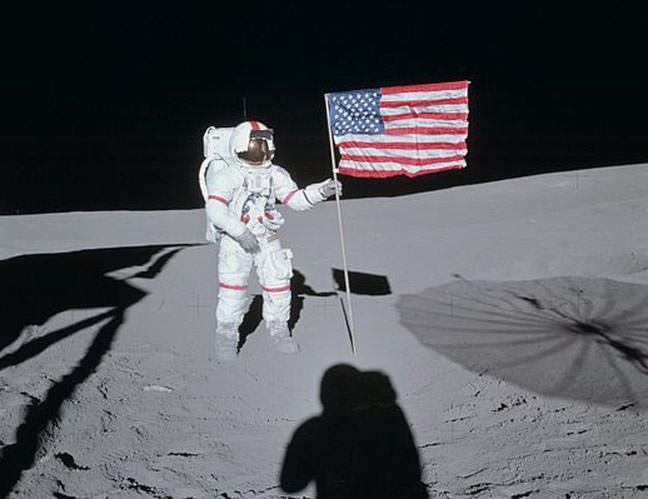
U.S. astronaut Scott Kelly regularly tweets photos from the station and recently noted the passing of Apollo 14 astronaut Edgar Mitchell, who died Thursday at age 85 on the eve of the 45th anniversary of his lunar landing on February 5, 1971. Mitchell was one of only 12 people to walk on the moon and described the experience to the UK Telegraph in 2014:
Relive the Mitchell’s Apollo 14 mission to the moon in 9 minutes and 57 seconds
“Looking at Earth from space and seeing it was a planet in isolation … that was an experience of ecstasy, realizing that every molecule in our bodies is a system of matter created from a star hanging in space. The experience I had was called Samadhi in the ancient Sanskrit, a feeling of overwhelming joy at seeing the Earth from that perspective.”
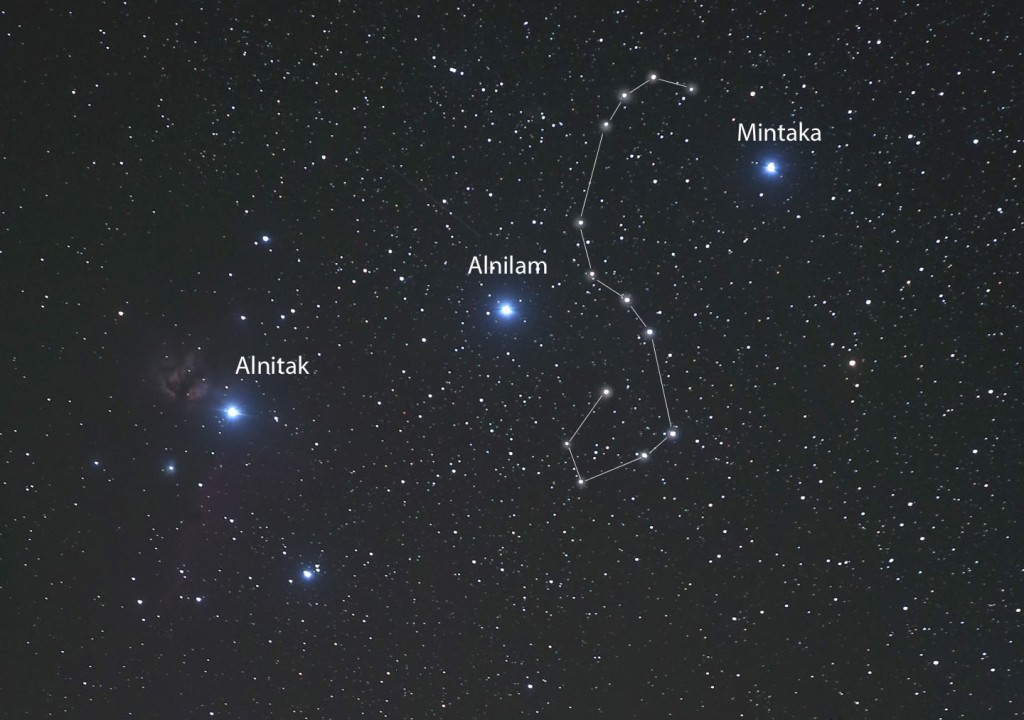
Only a human could stand in so barren and forbidding a place and experience such profound joy. You don’t have to go to the moon to be moved by sights in the night. Just step outside and watch the ISS glide by or grab a pair of binoculars and aim them at Orion’s Belt. Orion stands due south around 8 o’clock in in mid-February practically shouting to be looked at.
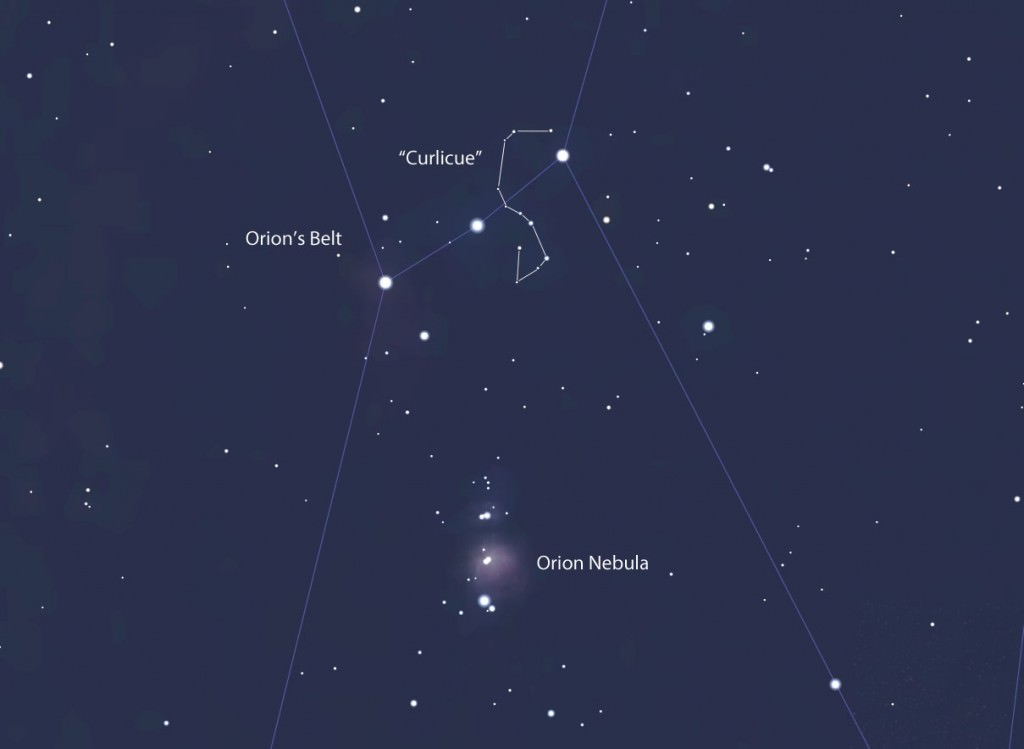
The Belt is lovely enough, but its surroundings glitter with stars just below the naked eye limit, in particular a little curlicue or “S” between Alnilam and Mintaka composed of 6th and 7th magnitude stars. Look for it in any pair of binoculars and don’t stop there. Take a few minutes to sweep the area and enjoy the starry goodness about then drop a field of view south for a look at the Orion Nebula. Inside this fuzzy spot 10 light years across and 1,350 light years away, hundreds of new stars are incubating, waiting for the day they can blaze forth like their compadres that make up the rest of Orion.
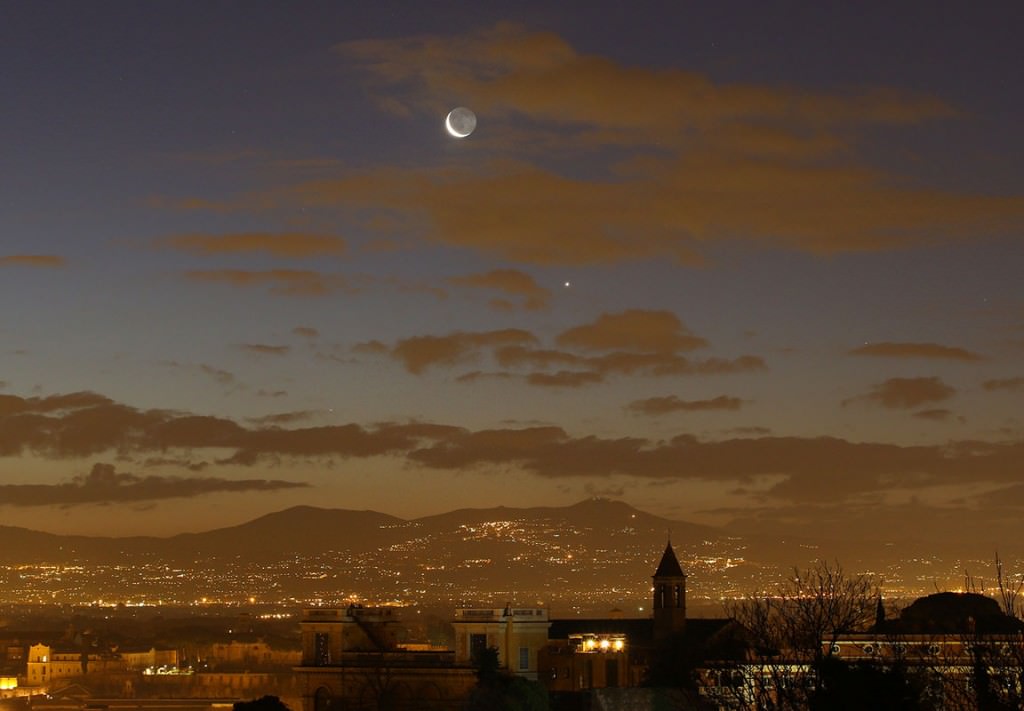
After touting the advantages of evening sky watching, forgive me if I also direct you to the morning sky and potential sleep loss. Although the waning crescent moon has now departed the scene, the wonderful alignment of Mercury, Venus, Saturn, Mars and Jupiter remains visible in the coming week even as Mercury slowly sinks back toward the eastern horizon. If you haven’t seen this “gang of 5”, set your alarm for a look starting about an hour before sunrise.
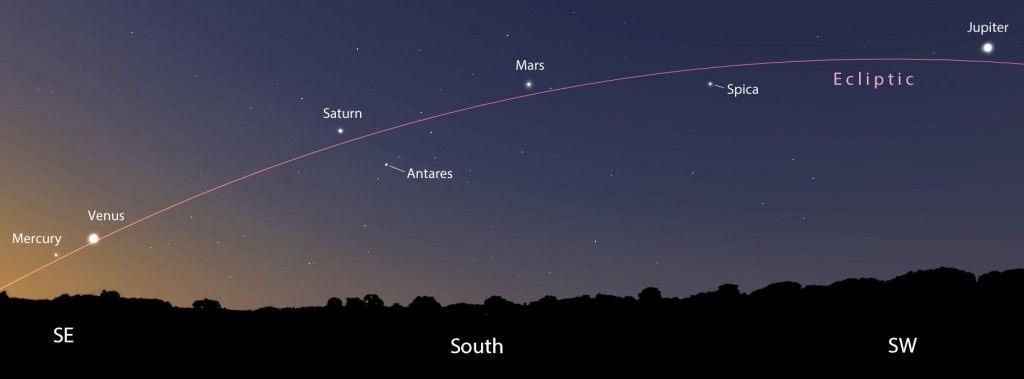
Find a location with as wide open a view as possible of the southeastern horizon. Jupiter, Mars and Saturn are plenty high up at that time and easy to spot, but Venus and Mercury hover only 5°-10° high. Both will pose no problem if you can get the trees and buildings out of the way! By the end of the coming week, Mercury will become challenging and then slip away.
Clear skies!
Astronomy Cast Ep. 401: Predictions for 2016 and Beyond
What do Pamela and Fraser think will happen or be discovered in 2016? What would they like to see in the near future?
Continue reading “Astronomy Cast Ep. 401: Predictions for 2016 and Beyond”
What Is The Heliocentric Model Of The Universe?

The Scientific Revolution, which took place in the 16th and 17th centuries, was a time of unprecedented learning and discovery. During this period, the foundations of modern science were laid, thanks to breakthroughs in the fields of physics, mathematics, chemistry, biology, and astronomy. And when it comes to astronomy, the most influential scholar was definitely Nicolaus Copernicus, the man credited with the creation of the Heliocentric model of the Universe.
Based on ongoing observations of the motions of the planets, as well as previous theories from classical antiquity and the Islamic World, Copernicus’ proposed a model of the Universe where the Earth, the planets and the stars all revolved around the Sun. In so doing, he resolved the mathematical problems and inconsistencies arising out of the classic geocentric model and laid the foundations for modern astronomy.
While Copernicus was not the first to propose a model of the Solar System in which the Earth and planets revolved around the Sun, his model of a heliocentric universe was both novel and timely. For one, it came at a time when European astronomers were struggling to resolve the mathematical and observational problems that arose out of the then-accepted Ptolemaic model of the Universe, a geocentric model proposed in the 2nd century CE.
In addition, Copernicus’ model was the first astronomical system that offered a complete and detailed account of how the Universe worked. Not only did his model resolves issues arising out of the Ptolemaic system, it offered a simplified view of the universe that did away with complicated mathematical devices that were needed for the geocentric model to work. And with time, the model gained influential proponents who contributed to it becoming the accepted convention of astronomy.

The Ptolemaic (Geocentric) Model:
The geocentric model, in which planet Earth is the center of the Universe and is circled by the Sun and all the planets, had been the accepted cosmological model since ancient times. By late antiquity, this model had come to be formalized by ancient Greek and Roman astronomers, such as Aristotle (384 – 322 BCE) – who’s theories on physics became the basis for the motion of the planets – and Ptolemy (ca. 100 – ca.?170 CE), who proposed the mathematical solutions.
The geocentric model essentially came down to two common observations. First of all, to ancient astronomers, the stars, the Sun, and the planets appeared to revolve around the Earth on daily basis. Second, from the perspective of the Earth-bound observer, the Earth did not appear to move, making it a fixed point in space.
The belief that the Earth was spherical, which became an accepted fact by the 3rd century BCE, was incorporated into this system. As such, by the time of Aristotle, the geocentric model of the universe became one where the Earth, Sun and all the planets were spheres, and where the Sun, planets and stars all moved in perfect circular motions.
However, it was not until Egyptian-Greek astronomer Claudius Ptolemaeus (aka. Ptolemy) released his treatise Almagest in the 2nd century BCE that the details became standardized. Drawing on centuries of astronomical traditions, ranging from Babylonian to modern times, Ptolemy argued that the Earth was in the center of the universe and the stars were all at a modest distance from the center of the universe.
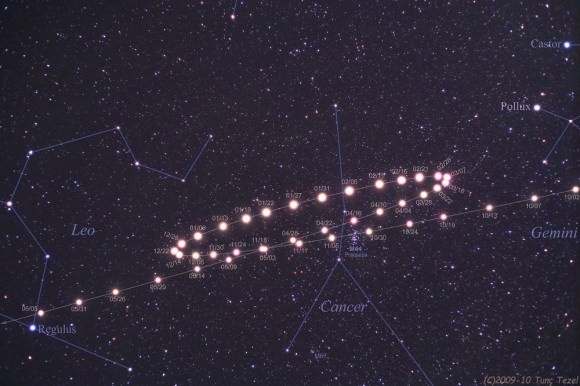
Each planet in this system is also moved by a system of two spheres – a deferent and an epicycle. The deferent is a circle whose center point is removed from the Earth, which was used to account for the differences in the lengths of the seasons. The epicycle is embedded in the deferent sphere, acting as a sort of “wheel within a wheel”. The purpose of he epicycle was to account for retrograde motion, where planets in the sky appear to be slowing down, moving backwards, and then moving forward again.
Unfortunately, these explanations did not account for all the observed behaviors of the planets. Most noticeably, the size of a planet’s retrograde loop (especially Mars) were sometimes smaller, and larger, than expected. To alleviate the problem, Ptolemy developed the equant – a geometrical tool located near the center of a planet’s orbit that causes it to move at a uniform angular speed.
To an observer standing at this point, a planet’s epicycle would always appear to move at uniform speed, whereas it would appear to be moving at non-uniform speed from all other locations.While this system remained the accepted cosmological model within the Roman, Medieval European and Islamic worlds for over a thousand years, it was unwieldy by modern standards.
However, it did manage to predict planetary motions with a fair degree of accuracy, and was used to prepare astrological and astronomical charts for the next 1500 years. By the 16th century, this model was gradually superseded by the heliocentric model of the universe, as espoused by Copernicus, and then Galileo and Kepler.
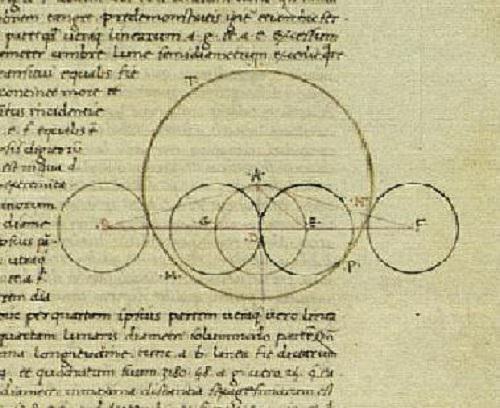
The Copernican (Heliocentric) Model:
In the 16th century, Nicolaus Copernicus began devising his version of the heliocentric model. Like others before him, Copernicus built on the work of Greek astronomer Atistarchus, as well as paying homage to the Maragha school and several notable philosophers from the Islamic world (see below). By the early 16th century, Copernicus summarized his ideas in a short treatise titled Commentariolus (“Little Commentary”).
By 1514, Copernicus began circulating copies amongst his friends, many of whom were fellow astronomers and scholars. This forty-page manuscript described his ideas about the heliocentric hypothesis, which was based on seven general principles. These principles stated that:
- Celestial bodies do not all revolve around a single point
- The center of Earth is the center of the lunar sphere—the orbit of the moon around Earth
- All the spheres rotate around the Sun, which is near the center of the Universe
- The distance between Earth and the Sun is an insignificant fraction of the distance from Earth and Sun to the stars, so parallax is not observed in the stars
- The stars are immovable – their apparent daily motion is caused by the daily rotation of Earth
- Earth is moved in a sphere around the Sun, causing the apparent annual migration of the Sun. Earth has more than one motion
- Earth’s orbital motion around the Sun causes the seeming reverse in direction of the motions of the planets
Thereafter he continued gathering data for a more detailed work, and by 1532, he had come close to completing the manuscript of his magnum opus – De revolutionibus orbium coelestium (On the Revolutions of the Heavenly Spheres). In it, he advanced his seven major arguments, but in more detailed form and with detailed computations to back them up.

By placing the orbits of Mercury and Venus between the Earth and the Sun, Copernicus was able to account for changes in their appearances. In short, when they are on the far side of the Sun, relative to Earth, they appear smaller but full. When they are on the same side of the Sun as the Earth, they appear larger and “horned” (crescent-shaped).
It also explained the retrograde motion of planets like Mars and Jupiter by showing that Earth astronomers do not have a fixed frame of reference but a moving one. This further explained how Mars and Jupiter could appear significantly larger at certain times than at others. In essence, they are significantly closer to Earth when at opposition than when they are at conjunction.
However, due to fears that the publication of his theories would lead to condemnation from the church (as well as, perhaps, worries that his theory presented some scientific flaws) he withheld his research until a year before he died. It was only in 1542, when he was near death, that he sent his treatise to Nuremberg to be published.
Historical Antecedents:
As already noted, Copernicus was not the first to advocate a heliocentric view of the Universe, and his model was based on the work of several previous astronomers. The first recorded examples of this are traced to classical antiquity, when Aristarchus of Samos (ca. 310 – 230 BCE) published writings that contained references which were cited by his contemporaries (such as Archimedes).
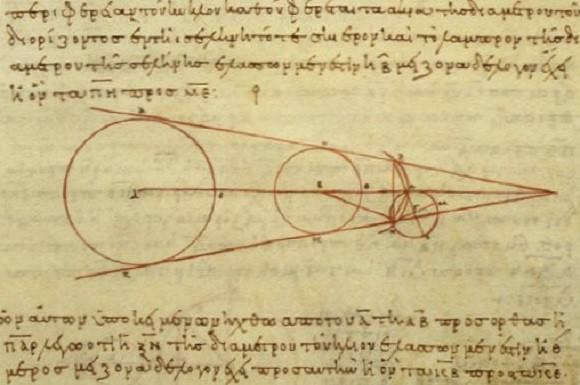
In his treatise The Sand Reckoner, Archimedes described another work by Aristarchus in which he advanced an alternative hypothesis of the heliocentric model. As he explained:
Now you are aware that ‘universe’ is the name given by most astronomers to the sphere whose center is the center of the earth and whose radius is equal to the straight line between the center of the sun and the center of the earth. This is the common account… as you have heard from astronomers. But Aristarchus of Samos brought out a book consisting of some hypotheses, in which the premises lead to the result that the universe is many times greater than that now so called. His hypotheses are that the fixed stars and the sun remain unmoved, that the earth revolves about the sun in the circumference of a circle, the sun lying in the middle of the orbit, and that the sphere of the fixed stars, situated about the same center as the sun, is so great that the circle in which he supposes the earth to revolve bears such a proportion to the distance of the fixed stars as the center of the sphere bears to its surface.
This gave rise to the notion that there should be an observable parallax with the “fixed stars” (i.e an observed movement of the stars relative to each other as the Earth moved around the Sun). According to Archimedes, Aristarchus claimed that the stars were much farther away than commonly believed, and this was the reason for no discernible parallax.
The only other philosopher from antiquity who’s writings on heliocentrism have survived is Seleucis of Seleucia (ca. 190 – 150 BCE). A Hellenistic astronomer who lived in the Near-Eastern Seleucid empire, Seleucus was a proponent of the heliocentric system of Aristarchus, and is said to have proved the heliocentric theory.
According to contemporary sources, Seleucus may have done this by determining the constants of the geocentric model and applying them to a heliocentric theory, as well as computing planetary positions (possibly using trigonometric methods). Alternatively, his explanation may have involved the phenomenon of tides, which he supposedly theorized to be related to the influence of the Moon and the revolution of the Earth around the Earth-Moon ‘center of mass’.
In the 5th century CE, Roman philosopher Martianus Capella of Carthage expressed an opinion that the planets Venus and Mercury revolved around the Sun, as a way of explaining the discrepancies in their appearances. Capella’s model was discussed in the Early Middle Ages by various anonymous 9th-century commentators, and Copernicus mentions him as an influence on his own work.
During the Late Middle Ages, Bishop Nicole Oresme (ca. 1320-1325 to 1382 CE) discussed the possibility that the Earth rotated on its axis. In his 1440 treatise De Docta Ignorantia (On Learned Ignorance) Cardinal Nicholas of Cusa (1401 – 1464 CE) asked whether there was any reason to assert that the Sun (or any other point) was the center of the universe.
Indian astronomers and cosmologists also hinted at the possibility of a heliocentric universe during late antiquity and the Middle Ages. In 499 CE, Indian astronomer Aaryabhata published his magnum opus Aryabhatiya, in which he proposed a model where the Earth was spinning on its axis and the periods of the planets were given with respect to the Sun. He also accurately calculated the periods of the planets, times of the solar and lunar eclipses, and the motion of the Moon.
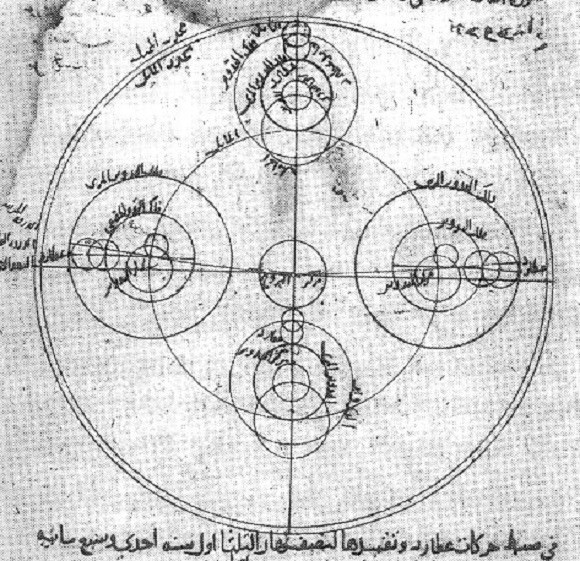
In the 15th century, Nilakantha Somayaji published the Aryabhatiyabhasya, which was a commentary on Aryabhata’s Aryabhatiya. In it, he developed a computational system for a partially heliocentric planetary model, in which the planets orbit the Sun, which in turn orbits the Earth. In the Tantrasangraha (1500), he revised the mathematics of his planetary system further and incorporated the Earth’s rotation on its axis.
Also, the heliocentric model of the universe had proponents in the medieval Islamic world, many of whom would go on to inspire Copernicus. Prior to the 10th century, the Ptolemaic model of the universe was the accepted standard to astronomers in the West and Central Asia. However, in time, manuscripts began to appear that questioned several of its precepts.
For instance, the 10th-century Iranian astronomer Abu Sa’id al-Sijzi contradicted the Ptolemaic model by asserting that the Earth revolved on its axis, thus explaining the apparent diurnal cycle and the rotation of the stars relative to Earth. In the early 11th century, Egyptian-Arab astronomer Alhazen wrote a critique entitled Doubts on Ptolemy (ca. 1028) in which he criticized many aspects of his model.

Around the same time, Iranian philosopher Abu Rayhan Biruni 973 – 1048) discussed the possibility of Earth rotating about its own axis and around the Sun – though he considered this a philosophical issue and not a mathematical one. At the Maragha and the Ulugh Beg (aka. Samarkand) Observatory, the Earth’s rotation was discussed by several generations of astronomers between the 13th and 15th centuries, and many of the arguments and evidence put forward resembled those used by Copernicus.
Impact of the Heliocentric Model:
Despite his fears about his arguments producing scorn and controversy, the publication of Copernicu’s theories resulted in only mild condemnation from religious authorities. Over time, many religious scholars tried to argue against his model. But within a few generation’s time, Copernicus’ theory became more widespread and accepted, and gained many influential defenders in the meantime.
These included Galileo Galilei (1564-1642), who’s investigations of the heavens using the telescope allowed him to resolve what were seen as flaws in the heliocentric model, as well as discovering aspects about the heavens that supported heliocentrism. For example, Galileo discovered moons orbiting Jupiter, Sunspots, and the imperfections on the Moon’s surface – all of which helped to undermine the notion that the planets were perfect orbs, rather than planets similar to Earth. While Galileo’s advocacy of Copernicus’ theories resulted in his house arrest, others soon followed.
German mathematician and astronomer Johannes Kepler (1571-1630) also helped to refine the heliocentric model with his introduction of elliptical orbits. Prior to this, the heliocentric model still made use of circular orbits, which did not explain why planets orbited the Sun at different speeds at different times. By showing how the planet’s sped up while at certain points in their orbits, and slowed down in others, Kepler resolved this.
In addition, Copernicus’ theory about the Earth being capable of motion would go on to inspire a rethinking of the entire field of physics. Whereas previous ideas of motion depended on an outside force to instigate and maintain it (i.e. wind pushing a sail) Copernicus’ theories helped to inspire the concepts of gravity and inertia. These ideas would be articulated by Sir Isaac Newton, who’s Principia formed the basis of modern physics and astronomy.
Although its progress was slow, the heliocentric model eventually replaced the geocentric model. In the end, the impact of its introduction was nothing short of a revolutionary. Henceforth, humanity’s understanding of the universe and our place in it would be forever changed.
We have written many interesting articles on the heliocentric model here at Universe Today. For starters, here’s Galileo Returns to the Vatican and The Earth Goes Around the Sun, Who Was Nicolaus Copernicus? and What is the Difference Between the Geocentric and Heliocentric Models?
For more information on heliocentrism, take a look at these articles from NASA on Copernicus or the center of the galaxy.
Astronomy Cast also has an episode on the subject, titled Episode 77: Where is the Center of the Universe and Episode 302: Planetary Motion in the Sky.
Zodiac Signs and Their Dates
Did you know that there are 88 constellations in the night sky? Over the course of several thousand years, human beings have cataloged and named them all. But only 12 of them are particularly famous and continue to play an active role in our astrological systems. These are known as the zodiac signs, 12 constellations that correspond to the different months of the year.
Each of these occupies a sector of the sky which makes up 30° of the ecliptic, starting at the vernal equinox – one of the intersections of the ecliptic with the celestial equator. The order of these astrological signs is Aries, Taurus, Gemini, Cancer, Leo, Virgo, Libra, Scorpio, Sagittarius, Capricorn, Aquarius and Pisces. Here are all the zodiac signs and their dates. If your birthday falls within one of those date ranges, that’s your zodiac sign.
Granted, modern science has shown astrology to be an ancient fallacy, a way of connecting patterns in celestial movements to events and behaviors here on Earth. But for ancient people, such patterns were necessary given the fact that they lacked an understanding of human psychology, astronomy, and that Earth was not the center of the universe.
The concept of the zodiac originated in Babylon in the 2nd millennium BCE, and was later influenced by Hellenistic (Ancient Greek), Roman, and Egyptian culture. This resulted in a mix of traditions, where the 12 zodiac symbols were associated with the 12 Houses – different fields of experience associated with the various planets – and the four classical elements (Earth, Wind, Water and Fire).

In essence, astrology maintains that celestial phenomena are related to human activity, so the signs are held to represent certain characteristics of behavior and personality traits. What we know today as astrology comes from the 2nd century AD, as it was formally described by Ptolemy in his work, Tetrabiblos.
This book was responsible for the spread of astrology’s as we know it across Europe and the Middle East during the time of the Roman Empire. These traditions have remained relatively unchanged for over seventeen centuries, though some alterations have been made due to the subsequent discoveries of the other planets in our Solar System.
Naturally, the birth of the modern psychology, biology and astronomy has completely discredited the notion that our personalities are determined by birth signs, the position of the stars or the planets. Given what we know today of the actual elements, the movements of the planets, and the forces that govern the universe, astrology is now known for being little more than superstition.
What’s more, the dates of the ‘star signs’ were assigned over 2,000 years ago, when the zodiac was first devised. At that time, astronomers believed that the Earth’s position was fixed in the universe, and did not understand that the Earth is subject to precession – where Earth’s rotational and orbital parameters slowly change with time. As such, the zodiac signs no longer correspond to constellations of stars that appear in night sky.
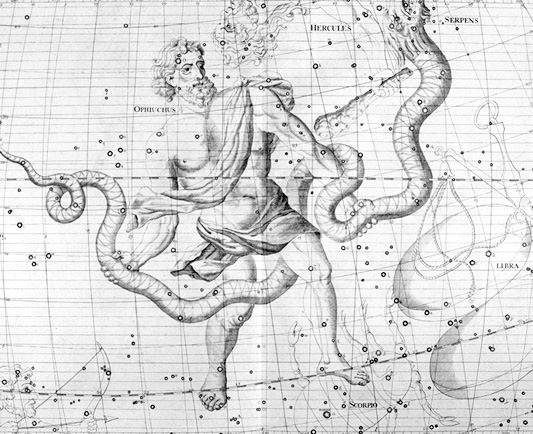
And last, but certainly not least, there is the issue of the missing 13th sign, which corresponds to the constellation Ophiuchus. Over 2000 years ago, this constellation was deliberately left out, though the Sun clearly passes in front of it after passing in front of Scorpius (aka. Scorpio) and before reaching Sagittarius.
It is unclear why ancient astrologers would do this, but it is a safe bet that they wanted to divide the 360° path of the Sun into 12 equal parts. But the true boundaries that divide the constellations, as defined by the International Astronomical Union (IAU), are not exact. And Ophiuchus actually spends more time behind the Sun than its immediate neighbor (19 days compared to Scorpius’ 12).
To find out what zodiac sign you were really born under, check out this story from BBC’s iWonder. And in the meantime, here are the zodiac signs, listed in order along with what they mean, and some interesting facts associated with their respective constellations:
![]()
Aries: March 21 – April 19
The sign of Aries, which covers 0° to 30° of celestial longitude, is represented by The Ram, which is based on the Chrysomallus – the flying ram that provided the Golden Fleece in Greek mythology. Aries is associated with the First House, known traditionally as Vita (Latin for life) and in the modern context as the “House of Self”. Aries is associated with Fire, and the ruling celestial body of Aries is Mars.
The Aries constellation is also home to Teegarden’s Star, one of Sun’s closest neighbors, located approximately 12 light years away. It appears to be a red dwarf, a class of low temperature and low luminosity stars. And then there’s Alpha Areitis, which is easily spotted by the naked eye. Also known as “Hamal” – literally “head of the sheep” in Arabic – this star is located at the point where constellations angles downward to form an arc.
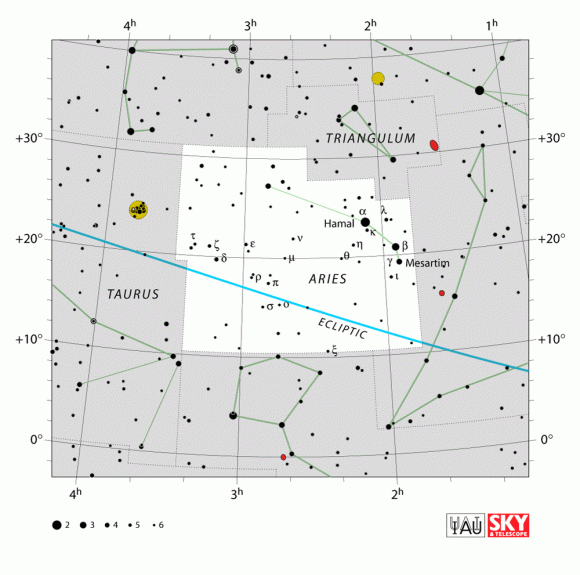
For those with telescopes, several galaxies can be spotted within the Aries constellation as well. These include the spiral galaxy NGC 772 and the large 13th magnitude NGC 697 spiral galaxy. NGC 972 is another, which is faint (at magnitude 12) and part of a galaxy group. And then there’s the dwarf irregular galaxy NGC 1156, which is considered a Magellanic-type galaxy with a larger than average core.
Aries is also home to several meteor showers, such as the May Arietids. This daylight meteor shower begins between May 4th and June 6th with maximum activity happening on May 16th. The Epsilon Arietids are also a daylight occurrence, and are active between April 25th to May 27th with peak activity on May 9th. And then there are the Daytime Arietids, which occur from May 22nd to July 2nd with a maximum rate of one a minute on June 8th.
To top it off, the Aries constellation contains several stars with extrasolar planets. For example, HIP 14810, a G5 type star, is orbited by three confirmed exoplanets, all of them giant planets (all Super-Earths). HD 12661, also a G-type main sequence star, has two orbiting planets (which appear to be Super-Jupiters). And HD 20367, a G0 type star, has one orbiting gas giant that roughly the same size as Jupiter.

Taurus: April 20 – May 20
The sign of Taurus, which covers 30° to 60° of celestial longitude, is represented by The Bull – which is based on the Cretan Bull that fathered the Minotaur and was killed by Theseus. Taurus is associated with the Second House, known by the Latin name of Lucrum (wealth) and by the modern name, “House of Value”, and the element Earth. The ruling celestial body of Taurus is Venus.
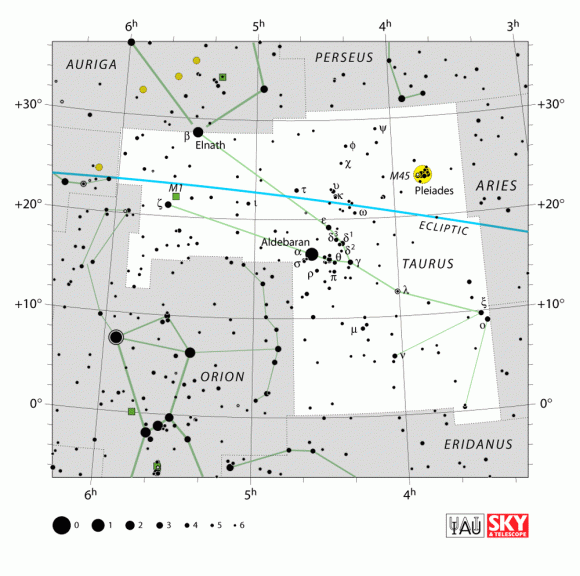
Taurus’ brightest star, Alpha Tauri, is also known by its traditional name, Al Dabaran (which was Latinized to become Aldebaran). The name, which is Arabic, literally means “the Follower” because of the way the Taurus constellation appears to follow the Pleiades star cluster across the sky. In Latin, it was traditionally known as Stella Dominatrix, but to Medieval English astronomers, it was known as Oculus Tauri – literally the “eye of Taurus.”
There is one major annual meteor shower associated with the constellation of Taurus: the annual Taurids, which peak on or about November 5th of each year and have a duration period of about 45 days. The maximum fall rate for this meteor shower is about 10 meteors per hour, with many bright fireballs often occurring when the parent comet – Encke – has passed near perihelion.
And speaking of Pleiades (aka. Messier 45, The Seven Sisters) this cluster of stars is located perpendicular to Aldebaran in the night sky, and is visible to the unaided eye. Although it is made up of over 1000 confirmed stars, this object is identifiable by its seven particularly bright blue stars (though as many as 14 up can be seen with the naked eye depending on local observing conditions).

Gemini: May 21 – June 20
The sign Gemini covers 60° to 90° of the celestial longitude, and is represented by The Twins. These are based on the Dioscuri of Greek mythology, two mortals that were granted shared godhood after death. Gemini is part of the Third House, traditionally named Fratres (Brothers) and currently known as the House of Communications. The associated element for Geminis is Air, and the ruling celestial body is Mercury.
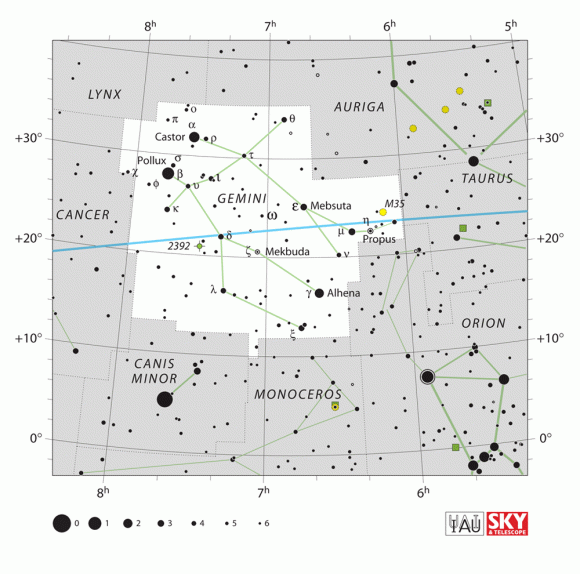
Gemini’s alpha and beta stars – aka. Castor and Pollux (“The Twins”) – are the easiest to recognize and can be spotted with the naked eye. Pollux is the brighter of the two, an orange-hued giant star of magnitude 1.2 that is 34 light-years from Earth. Pollux has an extrasolar planet revolving around it, as do two other stars in Gemini, a super-Jupiter which was confirmed in 2006.
There are two annual meteor showers associated with the constellation of Gemini. The first is the March Geminids, which peaks on or around March 22nd. The average fall rate is generally about 40 per hour (but this varies) and the meteors appear to be very slow, entering our atmosphere unhurriedly and leaving lasting trails.
The second meteor shower are the Geminids themselves, which peak on or near the date of December 14th, with activity beginning up to two weeks prior and lasting for several days. The Geminids are one of the most beautiful and mysterious showers, with a rate of about 110 per hour during a moonless night.
The Gemini constellation is also associated with Messier 35, a galactic open star cluster that is easily spotted with the naked eye. The star cluster is quite young, having formed some 100 million years ago, and is quite bright due to it having blown away most of its leftover material (i.e. nebular dust and gas) that went into the star formation process. Other open clusters in Gemini include NGC 2158, which lies directly southwest of M35 in the night sky.
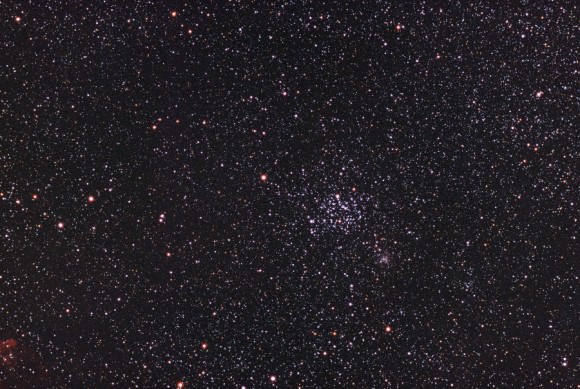
![]()
Cancer: June 21 – July 22
Cancer, which covers 90° to 120° of celestial longitude, is represented by The Crab – or Karkinos, a giant crab from Greek mythology that harassed Hercules during his fight with the Hydra. The sign is associated with the Fourth House – Genitor (Parent) in Latin, or the House of Home and Family in modern times. In terms of the elements, Cancers are characterized by the element of Water, and the ruling celestial body of Cancer is The Moon.
Cancer’s best known star is Beta Cancri, also known by its Arab name Altarf (“the End”). This 3.5 magnitude star is located 290 light-years from Earth and is a binary star system that consists of a spectral type K4III orange giant and a magnitude 14 red dwarf. This system is also home to a confirmed exoplanet, beta Cancri b, which is a Super-Jupiter with an orbital period of over 600 days.
In terms of deep-sky objects, Cancer is best known as being the home of Messier Object 44 (aka. Praesepe, or the Beehive Cluster), an open cluster located in the center of the constellation. Located 577 light-years from Earth, it is one of the nearest open clusters to our Solar System. M44 contains about 50 stars, the brightest of which are of the sixth magnitude.
The smaller, denser open cluster of Messier Object 67 can also be found in Cancer, which is 2500 light-years from Earth and contains approximately 200 stars. And so can the famous quasar, QSO J0842+1835, which was used to measure the speed of gravity in the VLBI experiment conducted by Edward Fomalont and Sergei Kopeikin in September 2002.
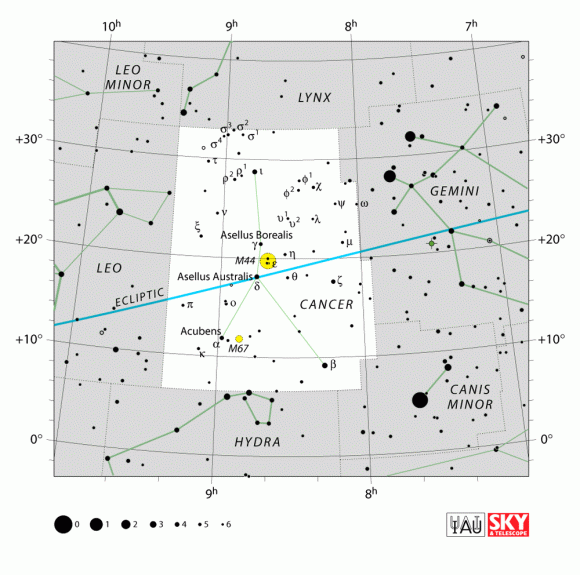
The active galaxy OJ 287 is also found in the Cancer constellation. Located 3.5 billion light years away from Earth, this galaxy has a central supermassive black hole that is one of the largest known (with 18 billion solar masses), and produces quasi-periodic optical outbursts. There is only one meteor shower associated with the constellation of Cancer, which is the Delta Cancrids. The peak date for this shower is on or about January 16t, and has been known to average only about 4 comets per hour (and the meteors are very swift).

Leo: July 23 – Aug. 22
Those born under the sign of Leo, which covers 120° to 150° of celestial longitude, carry the sign of The Lion – which is based on the Nemean Lion of Greek mythology, a lion that had an impenetrable hide. The sign of Leo is tied to the Fifth House, known in Latin as Nati (Children), or by its modern name, House of Pleasure. The sign of Leo is also associated with the element of Fire and the ruling celestial body of Leo is The Sun.
There are five annual meteor showers associated with the constellation Leo. The first is the Delta Leonid meteor stream, which begins between February 5th through March 19th every year. The activity peaks in late February, and the maximum amount of meteors averages around 5 per hour. The next is the Sigma Leonid meteor shower, which begins on April 17th. This is a very weak shower, with activity rates no higher than 1 to 2 per hour.
The next is the November Leonids, the largest and most dependable meteor shower associated with the Leo constellation. The peak date is November 17th, but activity occurs around 2 days on either side of the date. The radiant is near Regulus and this is the most spectacular of modern showers.
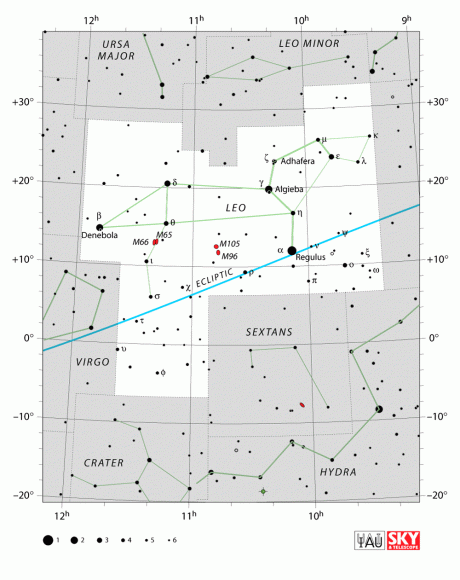
The shower is made more spectacular by the appearance of the Temple-Tuttle comet, which adds fresh material to the stream when it is at perihelion. The last is the Leo Minorids, which peak on or about December 14th, which is believed to produce around 10 faint meteors per hour.
Leo is also home to some of the largest structures in the observable universe. This includes many bright galaxies, which includes the Leo Triplet (aka. the M60 group). This group of objects is made up of three spiral galaxies – Messier 65, Messier 66, and NGC 3628.
The Triplet is at a distance of 37 million light-years from Earth and has a somewhat distorted shape due to gravitational interactions with the other members of the Triplet, which are pulling stars away from M66. Both M65 and M66 are visible in large binoculars or small telescopes, but seeing them in all of their elongated glory requires a telescope.
In addition, it is also home to the famous objects Messier 95, Messier 96, and Messier 105. These are spiral galaxies, in the case of M95 and M96 (with M95 being a barred spiral), while Messier 105 is an elliptical galaxy which is known to have a supermassive black hole at its center. Then there is the Leo Ring (aka. Cosmic Horseshoe) a cloud of hydrogen and helium gas, that orbits two galaxies found within this constellation.
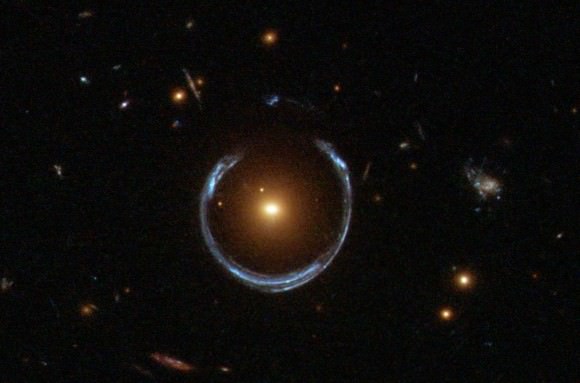

Virgo: Aug. 23 – Sept. 22
The sign of Virgo, which covers 150° to 180° of celestial longitude, is represented by the The Maiden. Based on Astraea from Greek mythology, the maiden was the last immortal to abandon Earth at the end of the Silver Age, when the gods fled to Olympus. Virgo is part of the Sixth House – Valetudo (Health) in Latin, or House of Health in modern times. They are also associated with the element of Earth and the ruling celestial body of Virgo is Mercury.
The brightest star in the Virgo constellation is Spica, a binary and rotating ellipsoidal variable – which means the two stars are so close together that they are egg-shaped instead of spherical – located between 240 and 260 light years from Earth. The primary is a blue giant and a variable star of the Beta Cephei type.
Besides Spica, other bright stars in Virgo include Beta Virginis (Zavijava), Gamma Virginis (Porrima), Delta Virginis (Auva) and Epsilon Virginis (Vindemiatrix). Other fainter stars that were also given names are Zeta Virginis (Heze), Eta Virginis (Zaniah), Iota Virginis (Syrma) and Mu Virginis (Rijl al Awwa). Virgo’s stars are also home to a great many exoplanets, with 35 verified exoplanets orbiting 29 of its stars.
The star 70 Virginis was one of the first planetary systems to have a confirmed exoplanet discovered orbiting it, which is 7.5 times the mass of Jupiter. The star Chi Virginis has one of the most massive planets ever detected, at a mass of 11.1 times that of Jupiter. The sun-like star 61 Virginis has three planets: one is a super-Earth and two are Neptune-mass planets.
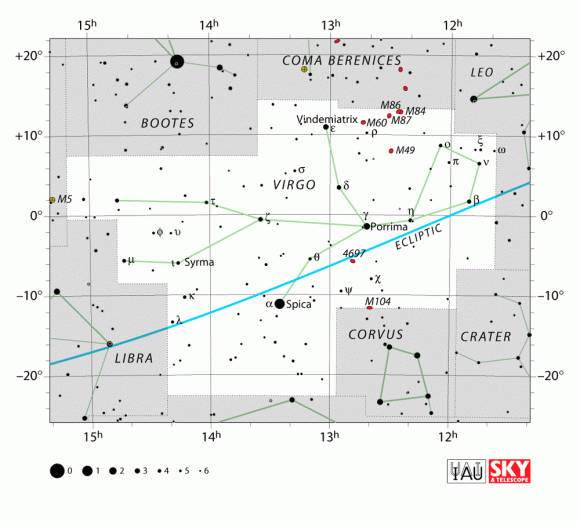
![]()
Libra: Sept. 23 – Oct. 22
The sign of Libra covers 180° to 210° of celestial longitude. It is represented by the symbol of The Scales, which is based on the Scales of Justice held by Themis, the Greek personification of divine law and custom and the inspiration for modern depictions of Lady Justice. Libra is part of the Seventh House – Uxor (Spouse) or House of Partnership, are associated with the element of Air, and the ruling celestial body is Venus.
Two notable stars in the Libra constellation are Alpha and Beta Librae – also known as Zubenelgenubi and Zubeneschamali, which translates to “The Southern Claw” and “The Northern Claw”. Alpha Libae is a double star consisting of an A3 primary star with a slight blue tinge and a fainter type F4 companion, both of which are located approximately 77 light years from our Sun.
Beta Librae is the brighter of the two, and the brightest star in the Virgo constellation. This is a blue star of spectral type B8 (but which appears somewhat greenish) which is located roughly 160 light years from Earth. Then there’s Gamma Librae (also called Zubenelakrab, which means “the Scorpion’s Claw”) which completes the Scorpion sign. It is an orange giant of magnitude 3.9, and is located 152 light-years from Earth.
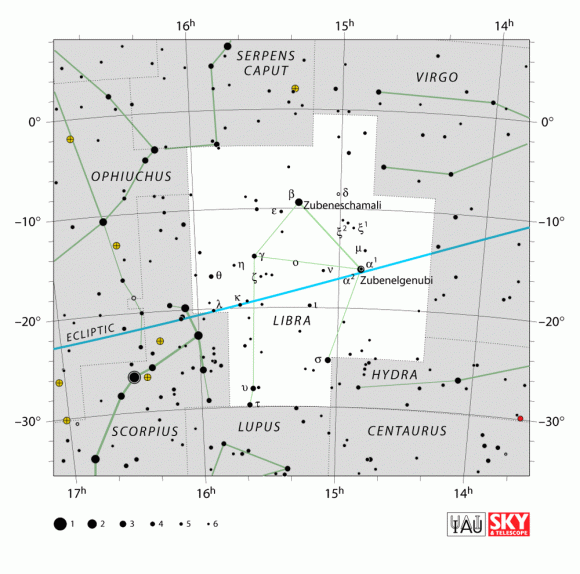
Libra is home to the star Gliese 581, which has a planetary system consisting of at least 6 planets. Both Gliese 581 d and Gliese 581 g are considered to be some of the most promising candidates for life. Gliese 581 c is considered to be the first Earth-like exoplanet to be found within its parent star’s habitable zone. All of these exoplanets are of significance for establishing the likelihood of life outside of the Solar System.
Libra is also home to one bright globular cluster, NGC 5897. It is a fairly large and loose cluster, has an integrated magnitude of 9, and is located 40,000 light-years from Earth.

Scorpio: Oct. 23 – Nov. 21
The sign of Scorpio covers 210° to 240° of celestial longitude. Scorpio is represented by The Scorpion, which is based on Scorpius – a giant scorpion in Greek mythology sent by Gaia to kill Orion. Scorpio is part of the Eighth House – Mors (Death), known today as the House of Reincarnation – and is associated with the element of Water. Traditionally, the ruling celestial body of Scorpio was Mars, but has since become Pluto.
The Scorpius constellations includes many bright stars, the brightest being Alpha Scorpii (aka. Antares). The name literally means “rival of Mars” because of its distinct reddish hue. Other stars of note include Beta Scorpii (Acrab, or “the scorpion”), Delta Scorpii (Dschubba, or “the forehead”), Xi Scorpii (Girtab, also “the scorpion”), and Sigma and Tau Scorpii (Alniyat, “the arteries”).
Lambda Scorpii (Shaula) and Upsilon Scorpii (Lesath) – whose names both mean “sting”- mark the tip of the scorpion’s curved tail. Given their proximity to one another, Lambda Scorpii and Upsilon Scorpii are sometimes referred to as “the Cat’s Eyes”.
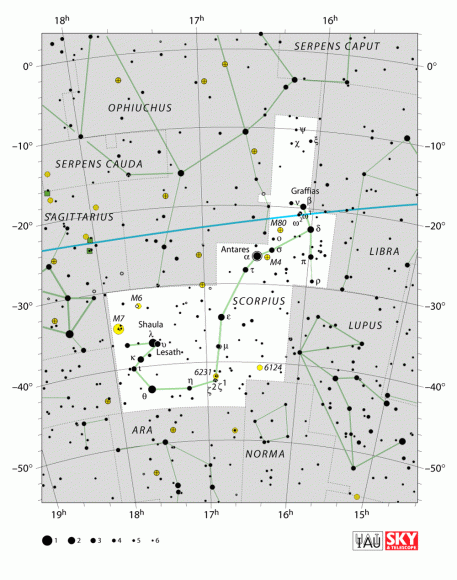
The Scorpius constellation, due to its position within the Milky Way, contains many deep-sky objects. These include the open clusters Messier 6 (the Butterfly Cluster) and Messier 7 (the Ptolemy Cluster), the open star cluster NGC 6231 (aka. Northern Jewel Box), and the globular clusters Messier 4 and Messier 80 (NGC 6093).
The constellation is also where the Alpha Scorpiids and Omega Scorpiids meteor showers take place. The Alphas begin on or about April 16th and end around May 9th, with a peak date of most activity on or about May 3rd. The second meteor shower, the Omega (or June) Scorpiids peaks on or about June 5th of each year. The radiant for this particular shower is closer to the Ophiuchus border and the activity rate on the peak date is high – with an average of about 20 meteors per hour and many reported fireballs.

Sagittarius: Nov. 22 – Dec. 21
The sign of Sagittarius covers 240° to 270° of celestial longitude and is represented by The Archer. This symbol is based on the centaur Chiron, who according to Greek mythology mentored Achilles in the art of archery. Sagittarius is part of the Ninth House – known as Iter (Journeys) or the House of Philosophy. Sagittarius’ associated element is Fire (positive polarity), and the ruling celestial body is Jupiter.
Stars of note in the Sagittarius constellation include Alpha Sagittarii, which is also known as Alrami or Rukbat (literally “the archer’s knee”). Then there is Epsilon Sagittarii (“Kaus Australis” or “southern part of the bow”), the brightest star in the constellation – at magnitude 1.85. Beta Sagittarii, located at a position associated with the forelegs of the centaur, has the traditional name Arkab, which is Arabic for “achilles tendon.”
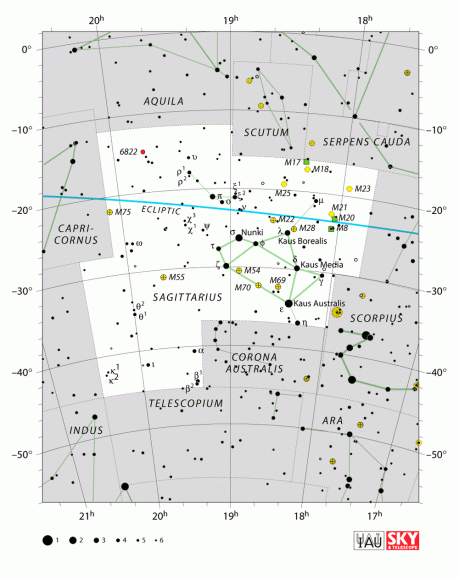
The second-brightest star is Sigma Sagittarii (“Nunki”), which is a B2V star at magnitude 2.08, approximately 260 light years from our Sun. Nunki is the oldest star name currently in use, having been assigned by the ancient Babylonians, and thought to represent the sacred Babylonian city of Eridu. Then there’s Gamma Sagittarii, otherwise known as Alnasl (the “arrowhead”). This is actually two star systems that share the same name, and both stars are actually discernible to the naked eye.
The Milky Way is at its densest near Sagittarius, since this is the direction in which the galactic center lies. Consequently, Sagittarius contains many star clusters and nebulae. This includes Messier 8 (the Lagoon Nebula), an emission (red) nebula located 5,000 light years from Earth which measures 140 by 60 light years.
Though it appears grey to the unaided eye, it is fairly pink when viewed through a telescope and quite bright (magnitude 3.0). The central area of the Lagoon Nebula is also known as the Hourglass Nebula, so named for its distinctive shape. Sagittarius is also home to the M17 Omega Nebula (also known as the Horseshoe or Swan Nebula).
This nebula is fairly bright (magnitude 6.0) and is located about 4890 light-years from Earth. Then there’s the Trifid Nebula (M20 or NGC 6514), an emission nebula that has reflection regions around the outside, making its exterior bluish and its interior pink. NGC 6559, a star forming region, is also associated with Sagittarius, located about 5000 light-years from Earth and showing both emission and reflection regions (blue and red).
![]()
Capricorn: Dec. 22 – Jan. 19
The sign of Capricorn spans 270° to 300° of celestial longitude and is represented by the Mountain Sea-Goat. This sign is based on Enki, the Sumerian primordial god of wisdom and waters who has the head and upper body of a mountain goat, and the lower body and tail of a fish. The sign is part of the Tenth House – Regnum (Kingdom), or The House of Social Status. Capricorns are associated with the element Earth, and the ruling body body is Saturn.

The brightest star in Capricornus is Delta Capricorni, also called Deneb Algedi. Like other stars such as Denebola and Deneb, it is named for the Arabic word for “tail”, which in this case translates to “the tail of the goat’. Deneb Algedi is a eclipsing binary star with a magnitude of 2.9, and which is located 39 light-years from Earth.
Another bright star in the Capricorni constellation is Alpha Capricorni (Algedi or Geidi, Arabic for “the kid”), which is an optical double star (two stars that appear close together) – both o which are binaries. It’s primary (Alpha² Cap) is a yellow-hued giant of magnitude 3.6, located 109 light-years from Earth, while its secondary (Alpha¹ Cap) is a yellow-hued supergiant of magnitude 4.3, located 690 light-years from Earth.
Beta Capricorni is a double star known as Dabih, which comes from the Arabic phrase “the lucky stars of the slaughter” a reference to ritual sacrifices performed by ancient Arabs. Its primary is a yellow-hued giant star of magnitude 3.1, 340 light-years from Earth, while the secondary is a blue-white hued star of magnitude 6.1. Another visible star is Gamma Capricorni (aka. Nashira, “bringing good tidings”), which is a white-hued giant star of magnitude 3.7, 139 light-years from Earth.
Several galaxies and star clusters are contained within Capricornus. This includes Messier 30 (NGC 7099) a centrally-condensed globular cluster of magnitude 7.5. Located approximately 30,000 light-years from our Sun, it cannot be seen with the naked eye, but has chains of stars extending to the north that can be seen with a telescope.
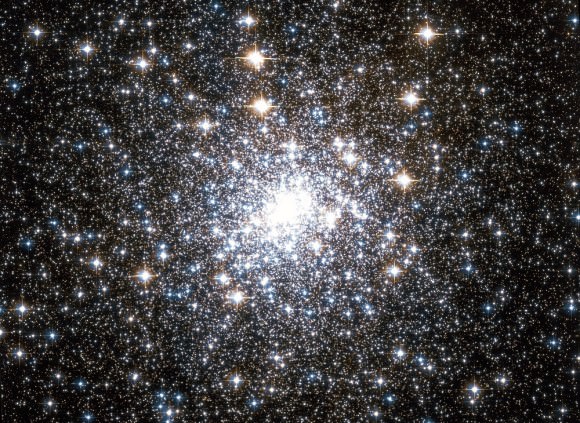
And then there is the galaxy group known as HCG 87, a group of at least three galaxies located 400 million light-years from Earth. It contains a large elliptical galaxy, a face-on spiral galaxy, and an edge-on spiral galaxy. These three galaxies are interacting, as evidenced by the high amount of star formation in the face-on spiral, and the connecting stream of stars and dust between edge-on spiral and elliptical galaxy.
The constellation of Capricornus has one meteor shower associated with it. The Capricornid meteor stream peaks on or about July 30th and is active for about a week before and after, with an average fall rate is about 10 to 30 per hour.
![]()
Aquarius: Jan. 20 – Feb. 18
Aquarius, which spans 300° to 330° of celestial longitude, is represented by the Water Bearer. In ancient Greek mythology, Aquarius is Ganymede, the beautiful Phrygian youth who was snatched up by Zeus to become the cup-bearer of the Gods. Aquarius is part of the Eleventh House – Benefacta (Friendship), or House of Friendship, is associated with the element of Air. Traditionally, the ruling celestial body of Aquarius was Saturn, but has since changed to Uranus.
While Aquarius has no particularly bright stars, recent surveys have shown that there are twelve exoplanet systems within the constellation (as of 2013). Gliese 876, one of the nearest stars (15 light-years), was the first red dwarf start to be found to have a planetary system – which consists of four planets, one of which is a terrestrial Super-Earth. 91 Aquarii is an orange giant star orbited by one planet, 91 Aquarii b, a Super-Jupiter. And Gliese 849 is a red dwarf star orbited by the first known long-period Jupiter-like planet, Gliese 849 b.
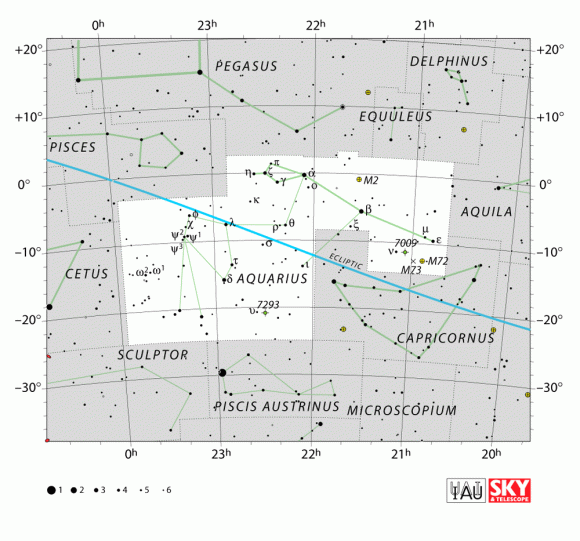
Aquarius is also associated with multiple Messier objects. M2 (NGC 7089) is located in Aquarius, which is an incredibly rich globular cluster located approximately 37,000 light-years from Earth. So is the four-star asterism M73 (which refers to a group of stars that appear to be related by their proximity to each other). Then there’s the small globular cluster M72, a globular cluster that lies a degree and half to the west of M73.
Aquarius is also home to several planetary nebulae. NGC 7293, also known as the Helix Nebula, is located at a distance of about 650 light years away, making it the closest planetary nebula to Earth. Then there’s the Saturn Nebula (NGC 7009) so-named because of its apparent resemblance to the planet Saturn through a telescope, with faint protrusions on either side that resemble Saturn’s rings.
There are five meteor showers associated with the constellation of Aquarius. The Southern Iota Aquarids begin around July 1st and end around September 18th, with the peak date occurring on August 6th with an hourly rate of 7-8 meteors average. The Northern Iota Aquarids occur between August 11th to September 10th, their maximum peak occurring on or about August 25th with an average of 5-10 meteors per hour.
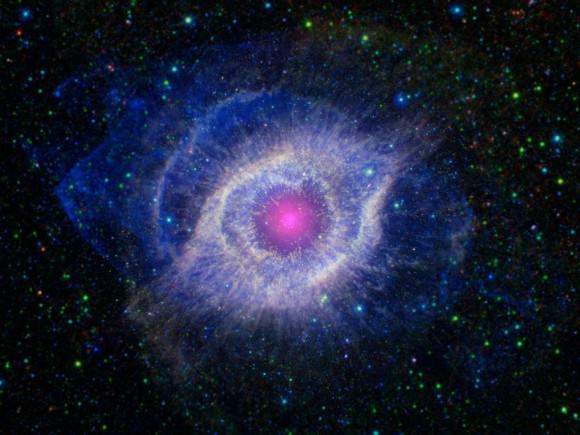
The Southern Delta Aquarids begin about July 14th and end around August 18th with a maximum hourly rate of 15-20 peaking on July 29th. The Northern Delta Aquarids usually begin around July 16th, and last through September 10th. The peak date occurs on or around August 13th with a maximum fall rate of about 10 meteors per hour.
Then there is the Eta Aquarid meteor shower, which begins about April 21th and ends around May 12th. It reaches its maximum on or about May 5th with a peak fall rate of up to 20 per hour for observers in the northern hemisphere and perhaps 50 per hour for observers in the southern hemisphere. Last, there is the March Aquarids, a daylight shower that may be associated with the Northern Iota Aquarid stream.

Pisces: Feb. 19 – March 20
The sign of Pisces covers 330° to 360° of celestial longitude and is represented by the The Fish. This symbol is derived from the ichthyocentaurs – a pair of centaurian sea-gods that had the upper body of a male human, the lower front of a horse, and the tail of a fish – who aided Aphrodite when she was born from the sea. Pisces is part of the Twelfth House of Carcer (Prison), or The House of Self-Undoing, and are associated with the element of Water. The ruling celestial body of Pisces is traditionally Jupiter, but has since come to be Neptune.
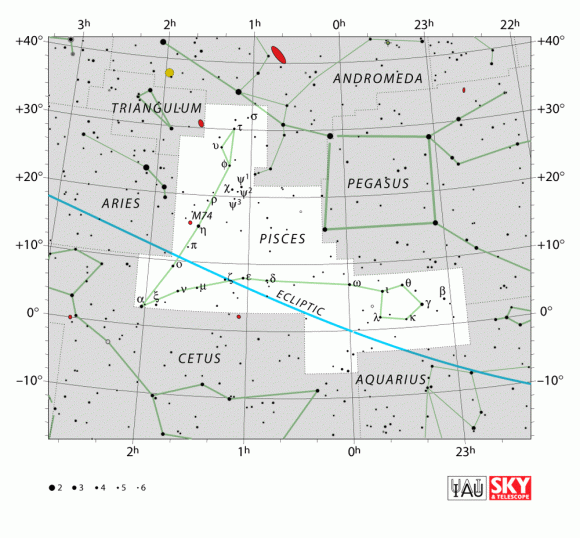
Beta Piscium, also known as Samakah (the “Fish’s Mouth”), is a B-class hydrogen fusing dwarf star in the Pisces constellation. Located 495 light years from Earth, this star produces 750 times more than light than our own Sun and is believed to be 60 million years old. The brightest star in the constellation, Eta Piscium, is a bright class B star that is located 294 years away from our Solar System.
This star is also known by its Babylonian name, Kullat Nunu (which translates to “cord of the fish”), the Arab name Al Pherg (“pouring point of water”), and the Chinese name Yòu Gèng – which means “Official in Charge of the Pasturing“, referring to an asterism consisting of Eta Piscium and its immediate neighbors – Rho Piscium, Pi Piscium, Omicron Piscium, and 104 Piscium.
And then there’s van Maanen’s Star (aka. Van Maanen 2) a white dwarf that is located about 14 light years from our Sun, making it the third closest star of its kind to our system (after Sirius B and Procyon B). Gamma Piscium is a yellow-orange giant star located about 130 light years away, and is visible with just binoculars.
The Pisces constellationis also home to a number of deep-sky objects. These include M74, a loosely-wound spiral galaxy that lies at a distance of 30 million light years from our Sun. It has many clusters of young stars and the associated nebulae, showing extensive regions of star formation. Also, there’s CL 0024+1654, a massive galaxy cluster that is primarily made up of yellow elliptical and spiral galaxies. CL 0024+1654 lies at a distance of 3.6 billion light-years from Earth and lenses the galaxy behind it (i.e. it creates arc-shaped images of the background galaxy).
Last, there the active galaxy and radio source known as 3C 31. Located at a distance of 237 million light-years from Earth, this galaxy has a supermassive black hole at its center. In addition to being the source of its radio waves, this black hole is also responsible for creating the massive jets that extend several million light-years in both directions from its center – making them some of the largest objects in the universe.
There is one annual meteor shower associated with Pisces which peaks on or about October 7 of each year. The Piscid meteor shower has a radiant near the Aries constellation and produces an average of 15 meteors per hour which have been clocked at speeds of up to 28 kilometers per second. As always, the meteoroid stream can begin a few days earlier and end a few days later than the expected peak and success on viewing depends on dark sky conditions.
Currently, the Vernal Equinox is currently located in Pisces. In astronomy, equinox is a moment in time at which the vernal point, celestial equator, and other such elements are taken to be used in the definition of a celestial coordinate system. Due to the precession of the equinoxes, the Vernal Equinox is slowly drifting towards Aquarius.
Astrology is a tradition that has been with us for thousands of years and continues to be observed by many people and cultures around the world. Today, countless people still consult their horoscope to see what the future has in store, and many more consider their birth sign to be of special significance.
And the fact that many people still consider it to be valid is an indication that superstitious and “magical” thinking is something we have yet to completely outgrow. But this goes to show how some cultural traditions are so enduring, and how people still like to ascribe supernatural powers to the universe.
We have a complete guide to all 88 constellations here at Universe Today. Research them at your leisure, and be sure to check out more than just the “zodiac sign” ones!
We also have a comprehensive list of all the Messier Objects in the night sky.
Astronomy Cast also has an episode on Zodiac Signs – Episode 319: The Zodiac
Order Of the Planets From The Sun
First the quick facts: Our Solar System has eight “official” planets which orbit the Sun. Here are the planets listed in order of their distance from the Sun:
Mercury, Venus, Earth, Mars, Jupiter, Saturn, Uranus, and Neptune. An easy mnemonic for remembering the order is “My Very Educated Mother Just Served Us Noodles.”
If you add in the dwarf planets, Ceres is located in the asteroid belt between Mars and Jupiter, while the remaining dwarf planets are in the outer Solar System and in order from the Sun are Pluto, Haumea, Makemake, and Eris. There is, as yet, a bit of indecision about the Trans-Neptunian Objects known as Orcus, Quaoar, 2007 O10, and Sedna and their inclusion in the dwarf planet category.
A mnemonic for this list would be “My Very Educated Mother Could Just Serve Us Noodles, Pie, Ham, Muffins, and Eggs” (and Steak, if Sedna is included.) You can find more tricks for remembering the order of the planets at our detailed article here.
Now, let’s look at a few details including the definition of a planet and a dwarf planet, as well as details about each of the planets in our Solar System.

What is a Planet?
In 2006, the International Astronomical Union (IAU) decided on the definition of a planet. The definition states that in our Solar System, a planet is a celestial body which:
- is in orbit around the Sun,
- has sufficient mass to assume hydrostatic equilibrium (a nearly round shape),
- has “cleared the neighborhood” around its orbit.
- is not a moon.
This means that Pluto, which was considered to be the farthest planet since its discovery in 1930, now is classified as a dwarf planet. The change in the definition came after the discovery three bodies that were all similar to Pluto in terms of size and orbit, (Quaoar in 2002, Sedna in 2003, and Eris in 2005).
With advances in equipment and techniques, astronomers knew that more objects like Pluto would very likely be discovered, and so the number of planets in our Solar System would start growing quickly. It soon became clear that either they all had to be called planets or Pluto and bodies like it would have to be reclassified.
With much controversy then and since, Pluto was reclassified as a dwarf planet in 2006. This also reclassified the asteroid Ceres as a dwarf planet, too, and so the first five recognized dwarf planets are Ceres, Pluto, Eris, Makemake and Haumea. Scientists believe there may be dozens more dwarf planets awaiting discovery.
Later, in 2008, the IAU announced the subcategory of dwarf planets with trans-Neptunian orbits would be known as “plutoids.” Said the IAU, “Plutoids are celestial bodies in orbit around the Sun at a distance greater than that of Neptune that have sufficient mass for their self-gravity to overcome rigid body forces so that they assume a hydrostatic equilibrium (near-spherical) shape, and that have not cleared the neighborhood around their orbit.”
This subcategory includes Ceres, Pluto, Haumea, Makemake, and Eris.
The Planets in our Solar System:
Having covered the basics of definition and classification, let’s get talking about those celestial bodies in our Solar System that are still classified as planets (sorry Pluto!). Here is a brief look at the eight planets in our Solar System. Included are quick facts and links so you can find out more about each planet.
Mercury:
Mercury is the closest planet to our Sun, at just 58 million km (36 million miles) or 0.39 Astronomical Unit (AU) out. But despite its reputation for being sun-baked and molten, it is not the hottest planet in our Solar System (scroll down to find out who that dubious honor goes go!)

Mercury is also the smallest planet in our Solar System, and is also smaller than its largest moon (Ganymede, which orbits Jupiter). And being equivalent in size to 0.38 Earths, it is just slightly larger than the Earth’s own Moon. But this may have something to do with its incredible density, being composed primarily of rock and iron ore. Here are the planetary facts:
- Diameter: 4,879 km (3,032 miles)
- Mass: 3.3011 x 1023 kg (0.055 Earths)
- Length of Year (Orbit): 87.97 Earth days
- Length of Day: 59 Earth days.
- Mercury is a rocky planet, one of the four “terrestrial planets” in our Solar System. Mercury has a solid, cratered surface, and looks much like Earth’s moon.
- If you weigh 45 kg (100 pounds) on Earth, you would weigh 17 kg (38 pounds) on Mercury.
- Mercury does not have any moons.
- Temperatures on Mercury range between -173 to 427 degrees Celcius (-279 to 801 degrees Fahrenheit)
- Just two spacecraft have visited Mercury: Mariner 10 in 1974-75 and MESSENGER, which flew past Mercury three times before going into orbit around Mercury in 2011 and ended its mission by impacting the surface of Mercury on April 30, 2015. MESSENGER has changed our understanding of this planet, and scientists are still studying the data.
- Find more details about Mercury at this article on Universe Today, and this page from NASA.
Venus:
Venus is the second closest planet to our Sun, orbiting at an average distance of 108 million km (67 million miles) or 0.72 AU. Venus is often called Earth’s “sister planet,” as it is just a little smaller than Earth. Venus is 81.5% as massive as Earth, and has 90% of its surface area and 86.6% of its volume. The surface gravity, which is 8.87 m/s², is equivalent to 0.904 g – roughly 90% of the Earth standard.

And due to its thick atmosphere and proximity to the Sun, it is the Solar Systems hottest planet, with temperatures reaching up to a scorching 735 K (462 °C). To put that in perspective, that’s over four and a half times the amount of heat needed to evaporate water, and about twice as much needed to turn tin into molten metal (231.9 °C)!
- Diameter: 7,521 miles (12,104 km)
- Mass: 4.867 x 1024 kg (0.815 Earth mass)
- Length of Year (Orbit): 225 days
- Length of day: 243 Earth days
- Surface temperature: 462 degrees C (864 degrees F)
- Venus’ thick and toxic atmosphere is made up mostly of carbon dioxide (CO2) and nitrogen (N2), with clouds of sulfuric acid (H2SO4) droplets.
- Venus has no moons.
- Venus spins backwards (retrograde rotation), compared to the other planets. This means that the sun rises in the west and sets in the east on Venus.
- If you weigh 45 kg (100 pounds) on Earth, you would weigh 41 kg (91 pounds) on Venus.
- Venus is also known and the “morning star” or “evening star” because it is often brighter than any other object in the sky and is usually seen either at dawn or at dusk. Since it is so bright, it has often been mistaken for a UFO!
- More than 40 spacecraft have explored Venus. The Magellan mission in the early 1990s mapped 98 percent of the planet’s surface. Find out more about all the missions here.
- Find out more about Venus on this article from Universe Today, and this page from NASA.
Earth:
Our home, and the only planet in our Solar System (that we know of) that actively supports life. Our planet is the third from the our Sun, orbiting it at an average distance of 150 million km (93 million miles) from the Sun, or one AU. Given the fact that Earth is where we originated, and has all the necessary prerequisites for supporting life, it should come as no surprise that it is the metric on which all others planets are judged.

Whether it is gravity (g), distance (measured in AUs), diameter, mass, density or volume, the units are either expressed in terms of Earth’s own values (with Earth having a value of 1) or in terms of equivalencies – i.e. 0.89 times the size of Earth. Here’s a rundown of the kinds of
- Diameter: 12,760 km (7,926 miles)
- Mass: 5.97 x 1024 kg
- Length of Year (Orbit): 365 days
- Length of day: 24 hours (more precisely, 23 hours, 56 minutes and 4 seconds.)
- Surface temperature: Average is about 14 C, (57 F), with ranges from -88 to 58 (min/max) C (-126 to 136 F).
- Earth is another terrestrial planet with an ever-changing surface, and 70 percent of the Earth’s surface is covered in oceans.
- Earth has one moon.
- Earth’s atmosphere is 78% nitrogen, 21% oxygen, and 1% various other gases.
- Earth is the only world known to harbor life.
- Find out more about Earth at a series of articles found here on Universe Today, and on this webpage from NASA.
Mars:
Mars is the fourth planet from the sun at a distance of about 228 million km (142 million miles) or 1.52 AU. It is also known as “the Red Planet” because of its reddish hue, which is due to the prevalence of iron oxide on its surface. In many ways, Mars is similar to Earth, which can be seen from its similar rotational period and tilt, which in turn produce seasonal cycles that are comparable to our own.

The same holds true for surface features. Like Earth, Mars has many familiar surface features, which include volcanoes, valleys, deserts, and polar ice caps. But beyond these, Mars and Earth have little in common. The Martian atmosphere is too thin and the planet too far from our Sun to sustain warm temperatures, which average 210 K (-63 ºC) and fluctuate considerably.
- Diameter: 6,787 km, (4,217 miles)
- Mass: 6.4171 x 1023 kg (0.107 Earths)
- Length of Year (Orbit): 687 Earth days.
- Length of day: 24 hours 37 minutes.
- Surface temperature: Average is about -55 C (-67 F), with ranges of -153 to +20 °C (-225 to +70 °F)
- Mars is the fourth terrestrial planet in our Solar System. Its rocky surface has been altered by volcanoes, impacts, and atmospheric effects such as dust storms.
- Mars has a thin atmosphere made up mostly of carbon dioxide (CO2), nitrogen (N2) and argon (Ar).If you weigh 45 kg (100 pounds) on Earth, you would weigh 17 kg (38 pounds) on Mars.
- Mars has two small moons, Phobos and Deimos.
- Mars is known as the Red Planet because iron minerals in the Martian soil oxidize, or rust, causing the soil to look red.
- More than 40 spacecraft have been launched to Mars. You can find out more about missions to Mars here.Find out more about Mars at this series of articles on Universe Today, and at this NASA webpage.
Jupiter:
Jupiter is the fifth planet from the Sun, at a distance of about 778 million km (484 million miles) or 5.2 AU. Jupiter is also the most massive planet in our Solar System, being 317 times the mass of Earth, and two and half times larger than all the other planets combined. It is a gas giant, meaning that it is primarily composed of hydrogen and helium, with swirling clouds and other trace gases.

Jupiter’s atmosphere is the most intense in the Solar System. In fact, the combination of incredibly high pressure and coriolis forces produces the most violent storms ever witnessed. Wind speeds of 100 m/s (360 km/h) are common and can reach as high as 620 km/h (385 mph). In addition, Jupiter experiences auroras that are both more intense than Earth’s, and which never stop.
- Diameter: 428,400 km (88,730 miles)
- Mass: 1.8986 × 1027 kg (317.8 Earths)
- Length of Year (Orbit): 11.9 Earth years
- Length of day: 9.8 Earth hours
- Temperature: -148 C, (-234 F)
- Jupiter has 67 known moons, with an additional 17 moons awaiting confirmation of their discovery – for a total of 67 moons. Jupiter is almost like a mini solar system!
- Jupiter has a faint ring system, discovered in 1979 by the Voyager 1 mission.
- If you weigh 45 kg (100 pounds) on Earth, you would weigh 115 kg (253) pounds on Jupiter.
- Jupiter’s Great Red Spot is a gigantic storm (bigger than Earth) that has been raging for hundreds of years. However, it appears to be shrinking in recent years.
- Many missions have visited Jupiter and its system of moons, with the latest being the Juno mission will arrive at Jupiter in 2016. You can find out more about missions to Jupiter here.
- Find out more about Jupiter at this series of articles on Universe Today and on this webpage from NASA.
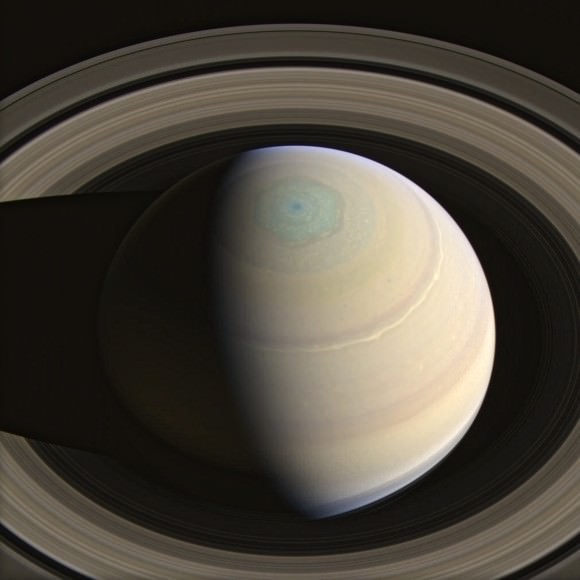
Saturn:
Saturn is the sixth planet from the Sun at a distance of about 1.4 billion km (886 million miles) or 9.5 AU. Like Jupiter, it is a gas giant, with layers of gaseous material surrounding a solid core. Saturn is most famous and most easily recognized for its spectacular ring system, which is made of seven rings with several gaps and divisions between them.
- Diameter: 120,500 km (74,900 miles)
- Mass: 5.6836 x 1026 kg (95.159 Earths)
- Length of Year (Orbit): 29.5 Earth years
- Length of day: 10.7 Earth hours
- Temperature: -178 C (-288 F)
- Saturn’s atmosphere is made up mostly of hydrogen (H2) and helium (He).
- If you weigh 45 kg (100 pounds) on Earth, you would weigh about 48 kg (107 pounds) on Saturn
- Saturn has 53 known moons with an additional 9 moons awaiting confirmation.
- Five missions have gone to Saturn. Since 2004, Cassini has been exploring Saturn, its moons and rings. You can out more about missions to Saturn here.
- Find out more about Saturn at this series of articles on Universe Today and at this webpage from NASA.
Uranus:
Uranus is the seventh planet from the sun at a distance of about 2.9 billion km (1.8 billion miles) or 19.19 AU. Though it is classified as a “gas giant”, it is often referred to as an “ice giant” as well, owing to the presence of ammonia, methane, water and hydrocarbons in ice form. The presence of methane ice is also what gives it its bluish appearance.

Uranus is also the coldest planet in our Solar System, making the term “ice” seem very appropriate! What’s more, its system of moons experience a very odd seasonal cycle, owing to the fact that they orbit Neptune’s equator, and Neptune orbits with its north pole facing directly towards the Sun. This causes all of its moons to experience 42 year periods of day and night.
- Diameter: 51,120 km (31,763 miles)
- Mass:
- Length of Year (Orbit): 84 Earth years
- Length of day: 18 Earth hours
- Temperature: -216 C (-357 F)
- Most of the planet’s mass is made up of a hot dense fluid of “icy” materials – water (H2O), methane (CH4). and ammonia (NH3) – above a small rocky core.
- Uranus has an atmosphere which is mostly made up of hydrogen (H2) and helium (He), with a small amount of methane (CH4). The methane gives Uranus a blue-green tint.
- If you weigh 45 kg (100 pounds) on Earth, you would weigh 41 kg (91 pounds) on Uranus.
- Uranus has 27 moons.
- Uranus has faint rings; the inner rings are narrow and dark and the outer rings are brightly colored.
- Voyager 2 is the only spacecraft to have visited Uranus. Find out more about this mission here.
- You can find out more about Uranus at this series of articles on Universe Today and this webpage from NASA.
Neptune:
Neptune is the eighth and farthest planet from the Sun, at a distance of about 4.5 billion km (2.8 billion miles) or 30.07 AU. Like Jupiter, Saturn and Uranus, it is technically a gas giant, though it is more properly classified as an “ice giant” with Uranus.

Due to its extreme distance from our Sun, Neptune cannot be seen with the naked eye, and only one mission has ever flown close enough to get detailed images of it. Nevertheless, what we know about it indicates that it is similar in many respects to Uranus, consisting of gases, ices, methane ice (which gives its color), and has a series of moons and faint rings.
- Diameter: 49,530 km (30,775 miles)
- Mass: 1.0243 x 1026 kg (17 Earths)
- Length of Year (Orbit): 165 Earth years
- Length of day: 16 Earth hours
- Temperature: -214 C (-353 F)
- Neptune is mostly made of a very thick, very hot combination of water (H2O), ammonia (NH3), and methane (CH4) over a possible heavier, approximately Earth-sized, solid core.
- Neptune’s atmosphere is made up mostly of hydrogen (H2), helium (He) and methane (CH4).
- Neptune has 13 confirmed moons and 1 more awaiting official confirmation.
- Neptune has six rings.
- If you weigh 45 kg (100 pounds) on Earth, you would weigh 52 kg (114 pounds) on Neptune.
Neptune was the first planet to be predicted to exist by using math. - Voyager 2 is the only spacecraft to have visited Neptune. You can find out more about this mission here.
- Find out more about Neptune at this series of articles on Universe Today and this NASA webpage. We have written many articles about the planets for Universe Today. Here are some facts about planets, and here’s an article about the names of the planets.If you’d like more info on the Solar System planets, dwarf planets, asteroids and more, check out NASA’s Solar System exploration page, and here’s a link to NASA’s Solar System Simulator.We’ve also recorded a series of episodes of Astronomy Cast about every planet in the Solar System. Start here, Episode 49: Mercury.Venus is the second planet from the Sun, and it is the hottest planet in the Solar System due to its thick, toxic atmosphere which has been described as having a “runaway greenhouse effect” on the planet.
Now you know! And if you find yourself unable to remember all the planets in their proper order, just repeat the words, “My Very Educated Mother Just Served Us Noodles.” Of course, the Pie, Ham, Muffins and Eggs are optional, as are any additional courses that might be added in the coming years!
We have many great articles on the Solar System and the planets here at Universe Today. Here is a rundown of the Inner Planets, the Outer Planets, a description of Terrestrial Planets, the Dwarf Planets, and Why Pluto is no Longer a Planet?.
Astronomy Cast also has some cool episodes about the Solar System. Here’s Episode 68: Pluto and the Icy Outer Planets, Episode 306: Accretion Discs, and Episode 159: Planet X.
A New “Mathematical” Definition Proposed for What Constitutes a Planet
In the current (heated) debate of what constitutes a planet, it seems everyone can agree at least one thing: The current definition put forth by the International Astronomical Union is actually quite vague and it really only applies to our own Solar System. So while the definition is unclear at best in our own neighborhood, it also doesn’t provide a framework for classifying the thousands of exo-worlds that are being discovered on almost a weekly basis.
Since math has been dubbed “the language of the Universe” it seems rather fitting and logical to use arithmetic to help in framing a better definition for planethood.
This week, UCLA professor Jean-Luc Margot has proposed a simple mathematical test that can be used to separate planets from other bodies like dwarf planets and minor planets. He says his new system is easy.
“One should not need a teleportation device to decide whether a newly discovered object is a planet,” Margot said.
The new approach would use estimates of the star’s mass and the planet’s mass and orbital period. Since the IAU’s definition is based primarily on the ability of a planet to “clear its orbit,” (whether it can accumulate or dominate small bodies in its orbital neighborhood), Margot’s test narrows this down to a specific timeframe of determining whether a body can clear a specific region around its orbit.
“A simple metric can be used to determine whether a planet or exoplanet can clear its orbital zone during a characteristic time scale, such as the lifetime of the host star on the main sequence,” Margot writes in his paper. “This criterion requires only estimates of star mass, planet mass, and orbital period, making it possible to immediately classify 99% of all known exoplanets.”
Under these criteria, all 8 planets and all classifiable exoplanets would be classified as planets. It also keeps the distinction between planets and dwarf planets. Some have pointed out that Margot’s criteria would make our Moon a planet. But, as Margot told Universe Today, that’s not necessarily so. “It really depends on how the IAU decides to define satellites and if or how they decide to define double planets,” he said.
Margot says his definition would be useful in generalizing and simplifying the definition of a planet, and that the information for applying this for exoplanets is easily obtained with Earth- or space-based telescopes.
“The disparity between planets and non-planets is striking,” Margot said. “The sharp distinction suggests that there is a fundamental difference in how these bodies formed, and the mere act of classifying them reveals something profound about nature.”
Margot also found that bodies that can clear their orbits — and therefore qualify as planets — are typically spherical.
“Because a quantitative orbit-clearing criterion can be applied to all planets and exoplanets,” Margot writes, “it is possible to extend the 2006 IAU planet definition to stars other than the Sun and to remove any possible ambiguity about what it means to clear an orbital zone.”
Margot presented his proposal at the annual meeting of the AAS’s Division for Planetary Sciences. It is not known whether the new approach will be considered by the IAU.
Further reading: Margot’s paper, UCLA press release




